Driving in Normandy, France is both a pleasure and a pain, but if you’re looking to visit the many awesome D-Day sites here, it’s a necessary evil. Despite the popularity of this region, there’s virtually no tourism infrastructure. The former Allied landing zones are still largely rural and undeveloped.
This is indeed a wonderful thing, but that means no super fast train or bus networks between sites, no reliable public transportation. If you wish to visit the landing beaches and the many incredible D-Day museums and historic sites, driving in Normandy is an absolute must. [Read more about this in my post on the 10 things you need to know when planning a Normandy trip.]
And though it can be challenging at times, driving yourself around Normandy is absolutely a rewarding and worthwhile experience. To make your trip easier, here are the most important things you need to know before your Normandy trip.
There is one other way to visit the most popular WWII sites in Normandy and that’s by booking a spot on an organized tour. Leave the driving and travel planning to the pros! Take a look at this list of the best local Normandy tours for more information; or this list of the best Normandy day tours from Paris if you’re not planning to stay overnight.
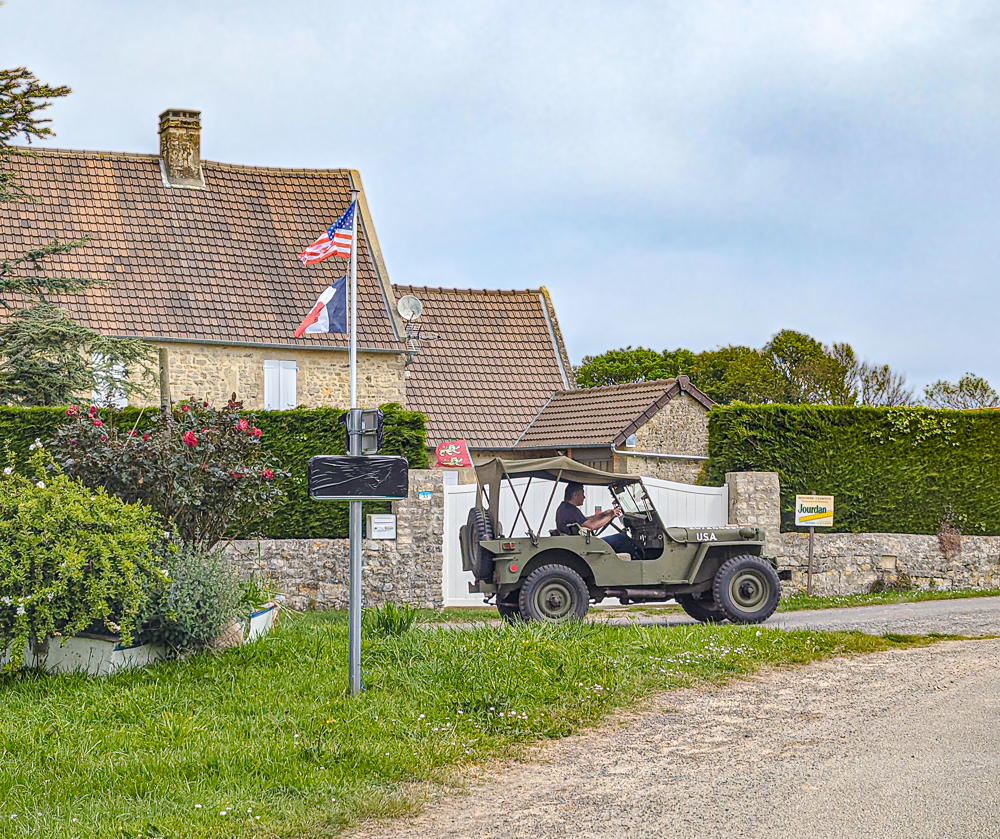
Driving in Normandy: Helpful map
This map contains a few helpful spots to keep handy when driving in Normandy–train stations, parking areas, etc. To save this map: Click on the star ⭑ next to the map’s title to save in your Google Maps. To use this map: When you get to Normandy, open Google Maps on your phone, click “Saved” at the bottom, then click “Maps.” (It doesn’t have all the parking areas but it does have some to get you started.)
If you only have one day to visit Normandy, be sure to check out these 7 best D-Day sites.
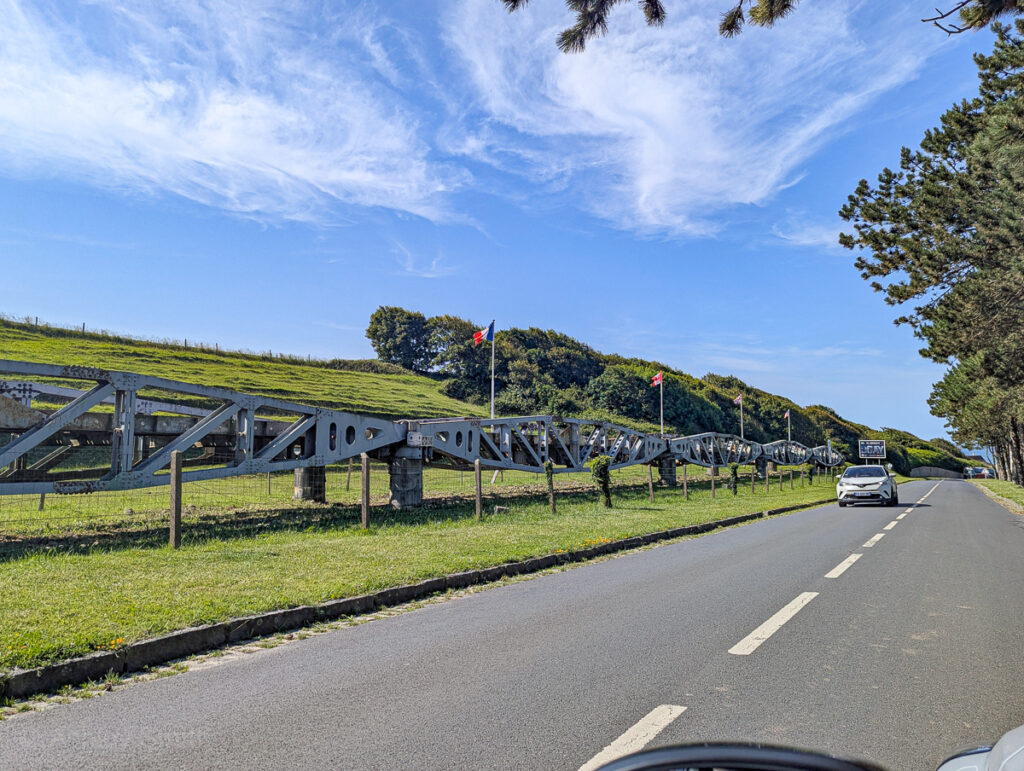
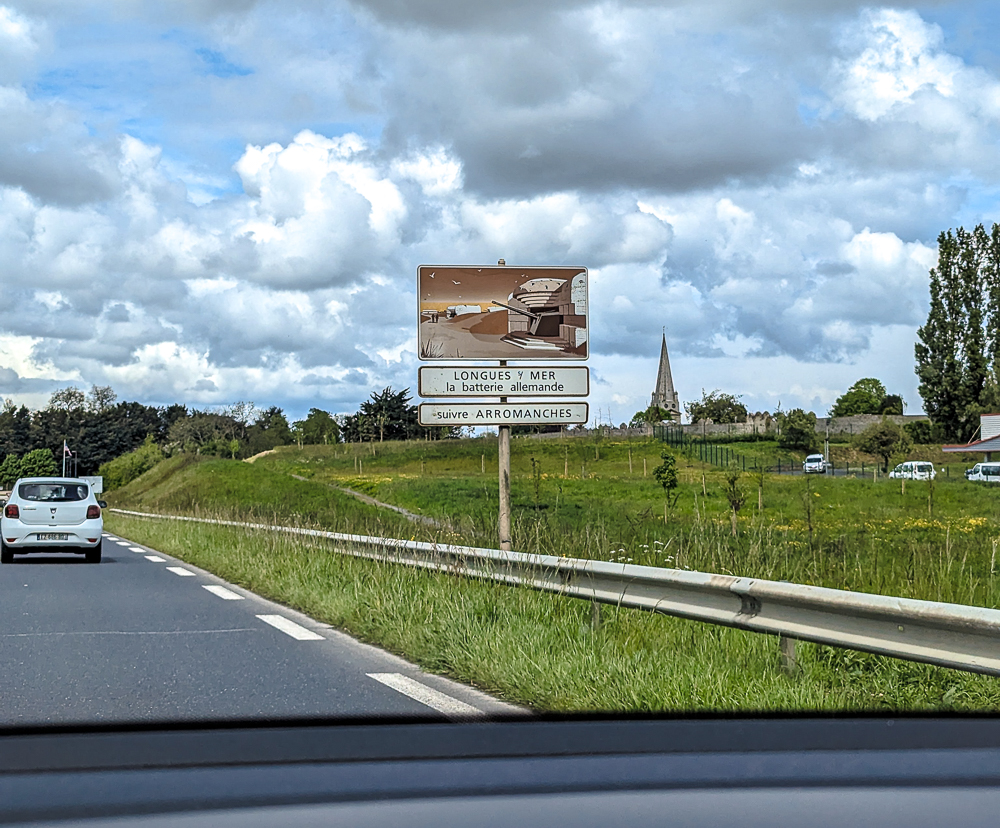
Renting a car in Normandy
Renting a car in Normandy is super easy and pretty much the same as renting a car here in the US or anywhere else. Here are a few things to consider:
Renting a car in Paris
Most people visiting Normandy also find themselves in Paris, usually beforehand. Renting a car in Paris and driving to Normandy is easy and not super far away. You’ll also find the best rental car deals this way, especially if you plan to return to Paris after your Normandy trip.
You can rent cars from all Paris airports (Charles de Gaulle, Orly, and Beauvais) and at several other Paris-area locations. In June 2025 I rented my car from the Gare du Nord train station after arriving from London.
Take a look at the best rental car deals in Paris here.
Distance from Paris to Normandy
Normandy is around 240-250 miles from Paris. It takes between 3 to 3.5 hours to drive from the center of Paris to the beaches of Normandy, depending on your specific destination.
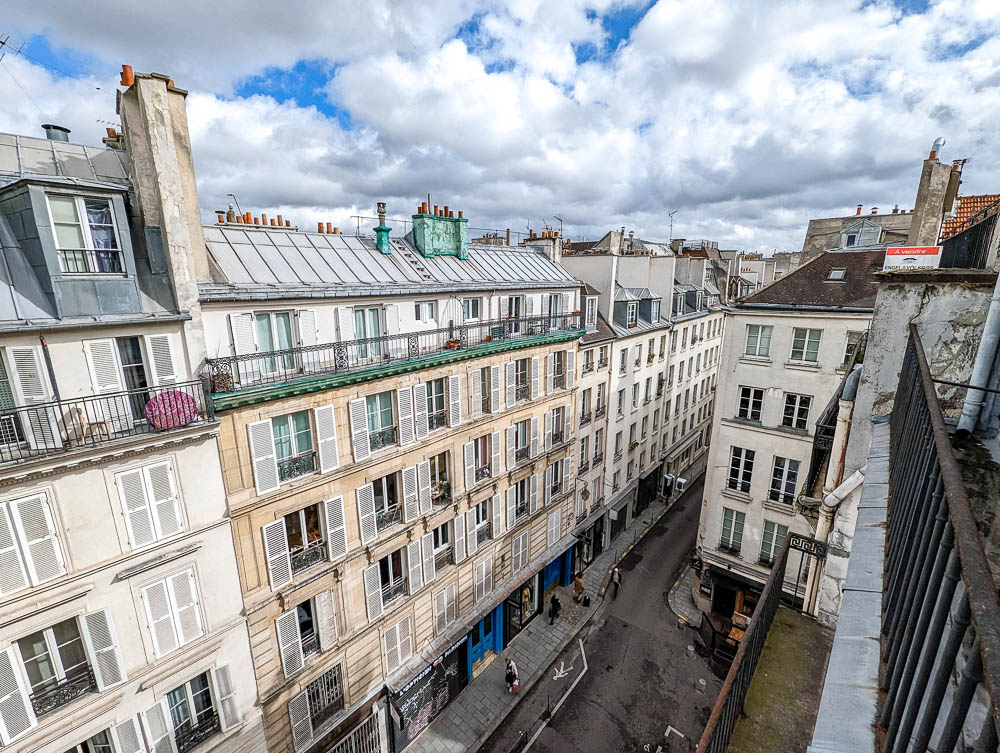
Renting a car in Caen, Bayeux, or Rouen
If you’d prefer to take the train from Paris to Normandy and then rent a car when you get here, that’s also possible. (And not a bad idea since driving in Paris is crazy.) The most popular cities to rent a car in Normandy are Caen and Bayeux—the area’s two “biggest” cities—and Rouen, Normandy’s capital.
You can check the exact train schedules here (all are direct!), but here’s how long you can expect your trip to take: (All three cities have rental car offices at the train station.)
- Train from Paris to Rouen: 1.5 hours
- Train from Paris to Caen: 2 hours
- Train from Paris to Bayeux: 2 hours 15 minutes
Personally, I’d take the train from Paris to Caen and pick up my rental car there. That’s going to be the easiest and most central location to get to and leave from. Bayeux and Caen also make great places to base yourself in Normandy.
Take a look at all Normandy-area rental car options here. (This is the car rental booking site I always use myself.)
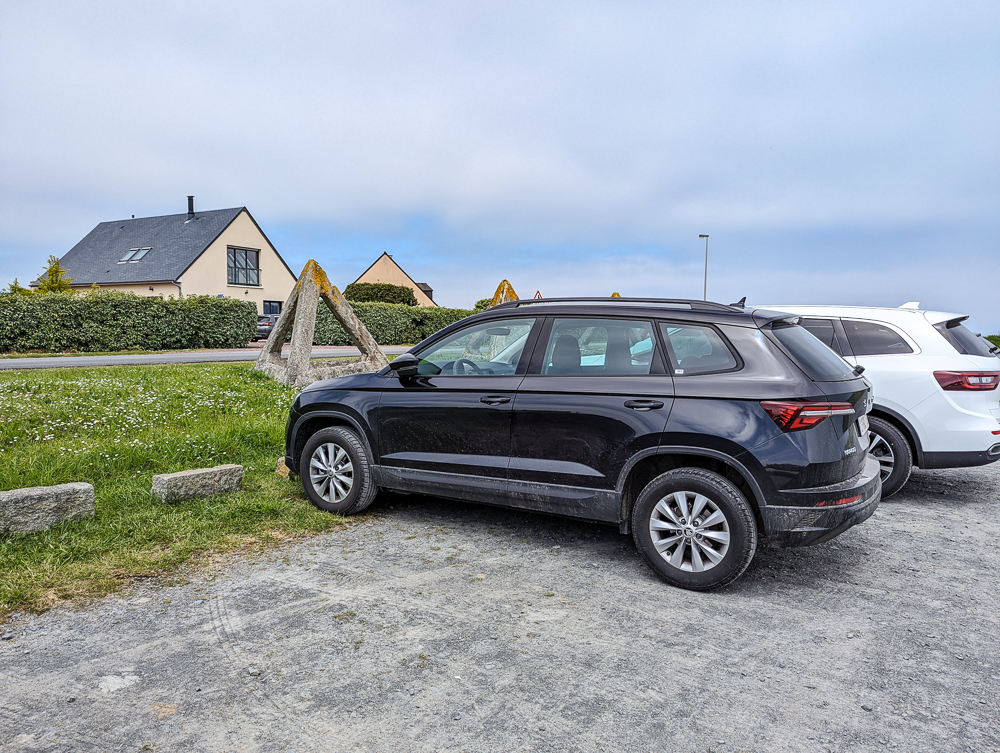
Requirements for driving in Normandy
Driving in Normandy is pretty straightforward and there aren’t a lot of special requirements you need to consider. As long as you have a valid US driver’s license, you should be good to go. However, keep in mind that each rental car company has their own rules and requirements so check with them directly for what you need to drive in France. Always read the fine print!
This post covers some basic information for driving in Normandy and my own personal observations and tips. It does not cover every single driving rule that exists here. It is your responsibility to research international driving laws and your research should go beyond this blog post. Don’t come crying to me when you get pulled over for forgetting they use kilometers here instead of miles.
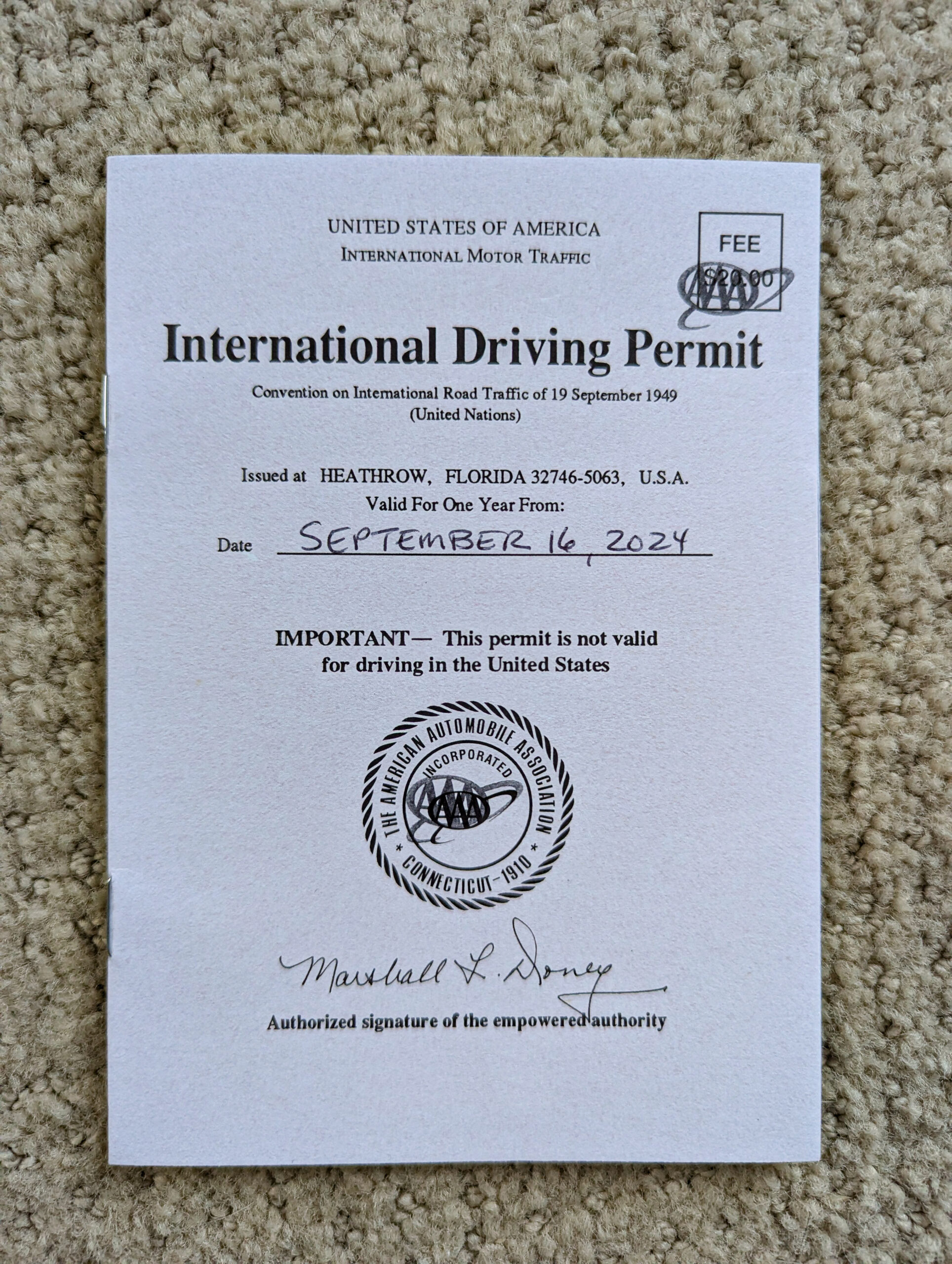
International driver’s permit
I’ve driven all over Europe for the past decade and only once have I been asked for my international driver’s license… and it was to pick up the car I’d be using to drive around Normandy. (Full disclosure: I picked it up from Budget in Brussels, Belgium.)
Regardless, there are some countries that require you to have one. And even if France isn’t on that list, it’s still possible the rental company may require it. It’s really best to have one just in case.
Here in the US, you can get your international driver’s permit from AAA. It takes about half an hour, costs just $20, and is good for a year. You don’t have to take any tests or anything—it’s really just a document you pay for. Yeah, it’s ridiculous, but it is what it is.
AAA is the only issuer of international driver’s permits authorized by the US State Department. Get all the info you need here.
Vignette
Unlike some other countries in Europe (like Slovenia or the Czech Republic), you do not need a vignette sticker for driving in Normandy (and France in general). Instead, you’ll simply pay tolls as you go. (More on those in a minute.)

What it’s like driving in Normandy
Driving in Normandy is both a beautiful experience and a stressful one, regardless of how skilled a driver you are. The main things to keep in mind are:
Small towns, country roads
Despite how many tourists visit this area on a regular basis, there aren’t a lot of “major” roads here. Most of your driving will be down rural country roads known as “D-roads”. Most roads here are paved but don’t be surprised when you get taken down a gravel or dirt road, or have to drive through a field to get to your next museum.
The country roads here are largely lined with trees on both sides so you’ll encounter a lot of blind curves and extremely narrow roads. (Remember: This is hedgerow country!) Some roads are technically two-way streets but only wide enough to fit one car; you’ll have to adjust on the fly. Other roads are single-direction. There will be signs to explain these situations.

The pedestrian factor
Another big thing to look out for here are clueless pedestrians. For whatever reason, many tourists to these popular areas forget they aren’t the only ones around and will walk right into the roads without so much as a glance. At places like Omaha Beach and Normandy American Cemetery, you have to pay extra attention to all the people—they will not look before walking in front of your car.
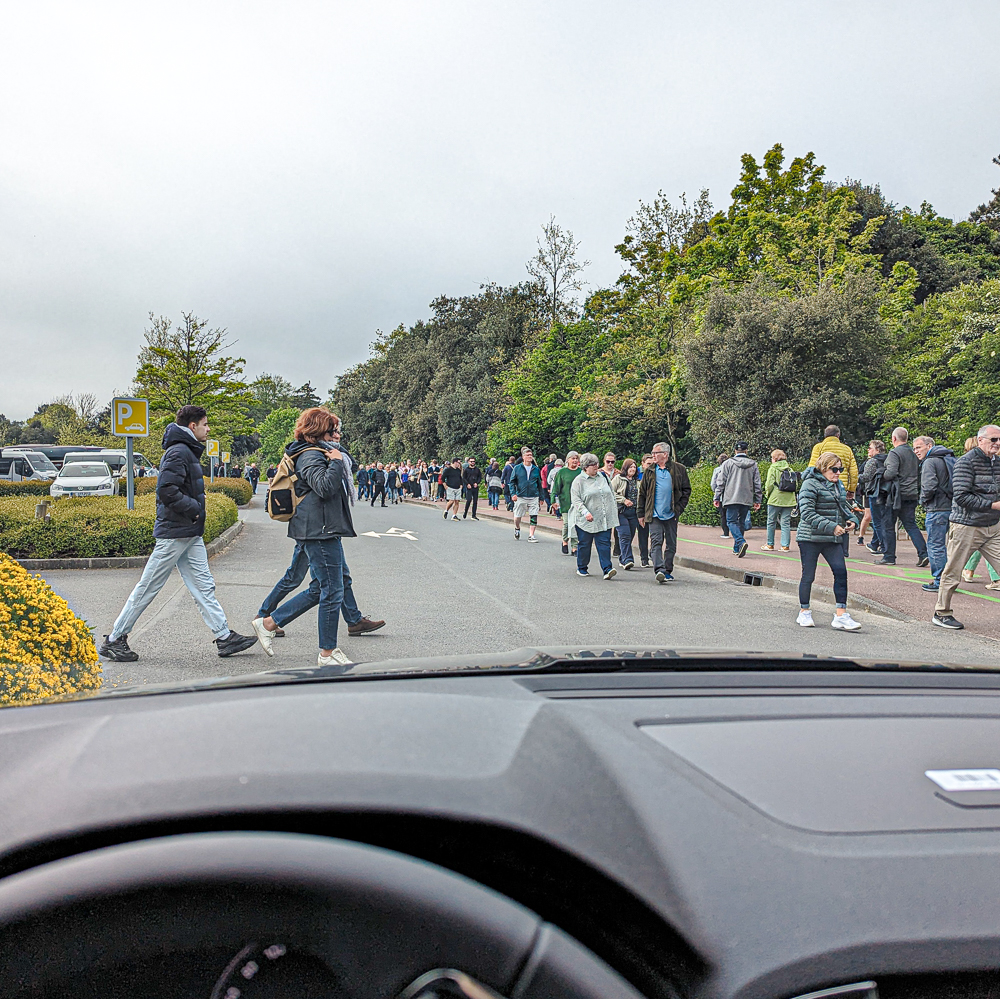
Also check out: Which is the best D-Day beach to visit in Normandy? Here’s how to choose.
Other drivers
For the most part, driving in Normandy is pleasant and probably pretty close to what you’re used to back home. Still, be extra vigilant when driving through the smaller towns that you’re being courteous and following the driving rules and signage that they are used to.
That being said, in my experience, Normandy drivers are some of the most aggressive drivers I’ve seen anywhere. (But tied with Poland!) The people here drive like they’re on a rampage and aren’t afraid to lay on the horn, curse at you, tailgate you, and attempt to run you off the road if you drive too slowly. Don’t let them fluster you.
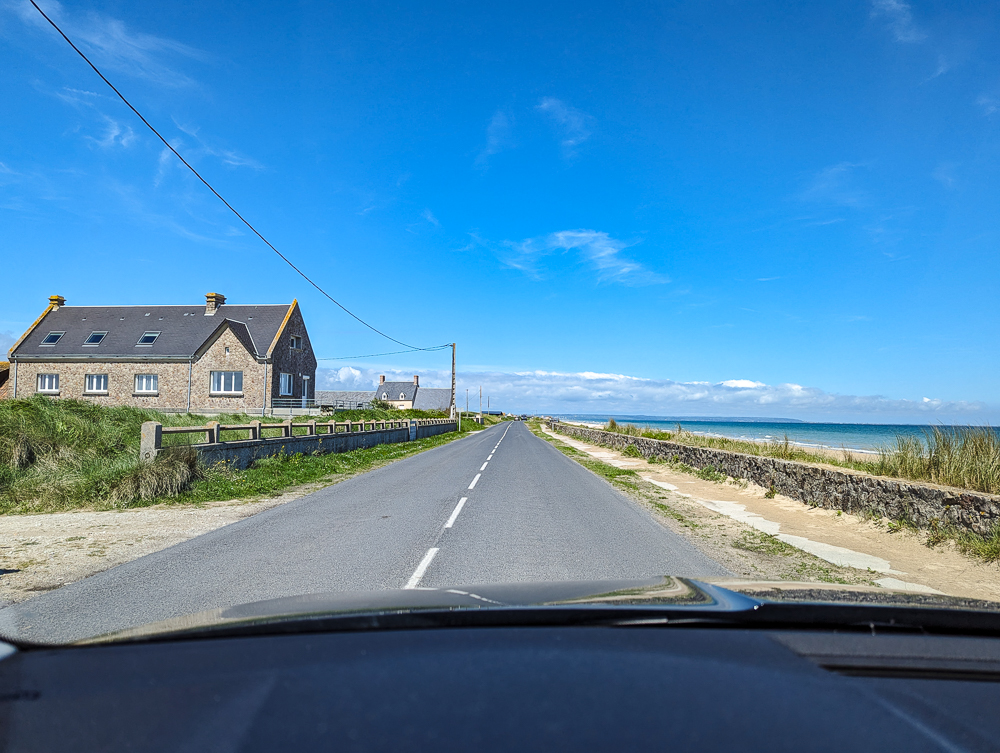
Road signs in Normandy
One big thing to learn before driving in Normandy are the road signs. Most you’re either familiar with already or can easily figure out, but some may be completely new to you. Here are some of the most common Normandy street signs you need to familiarize yourself with. (I drew the following 7 graphics myself so I’m legally obligated to tell you they may differ from official signage.)
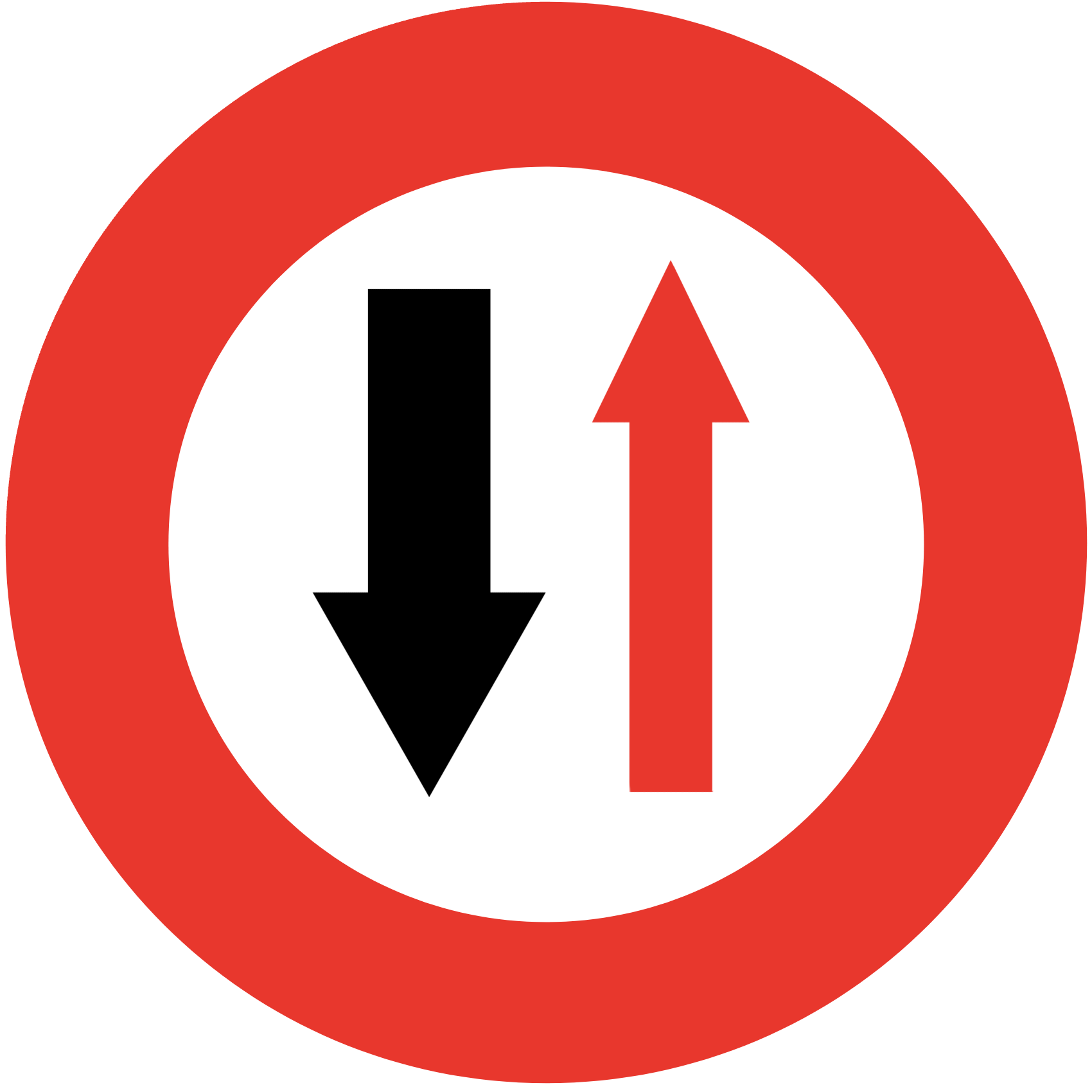
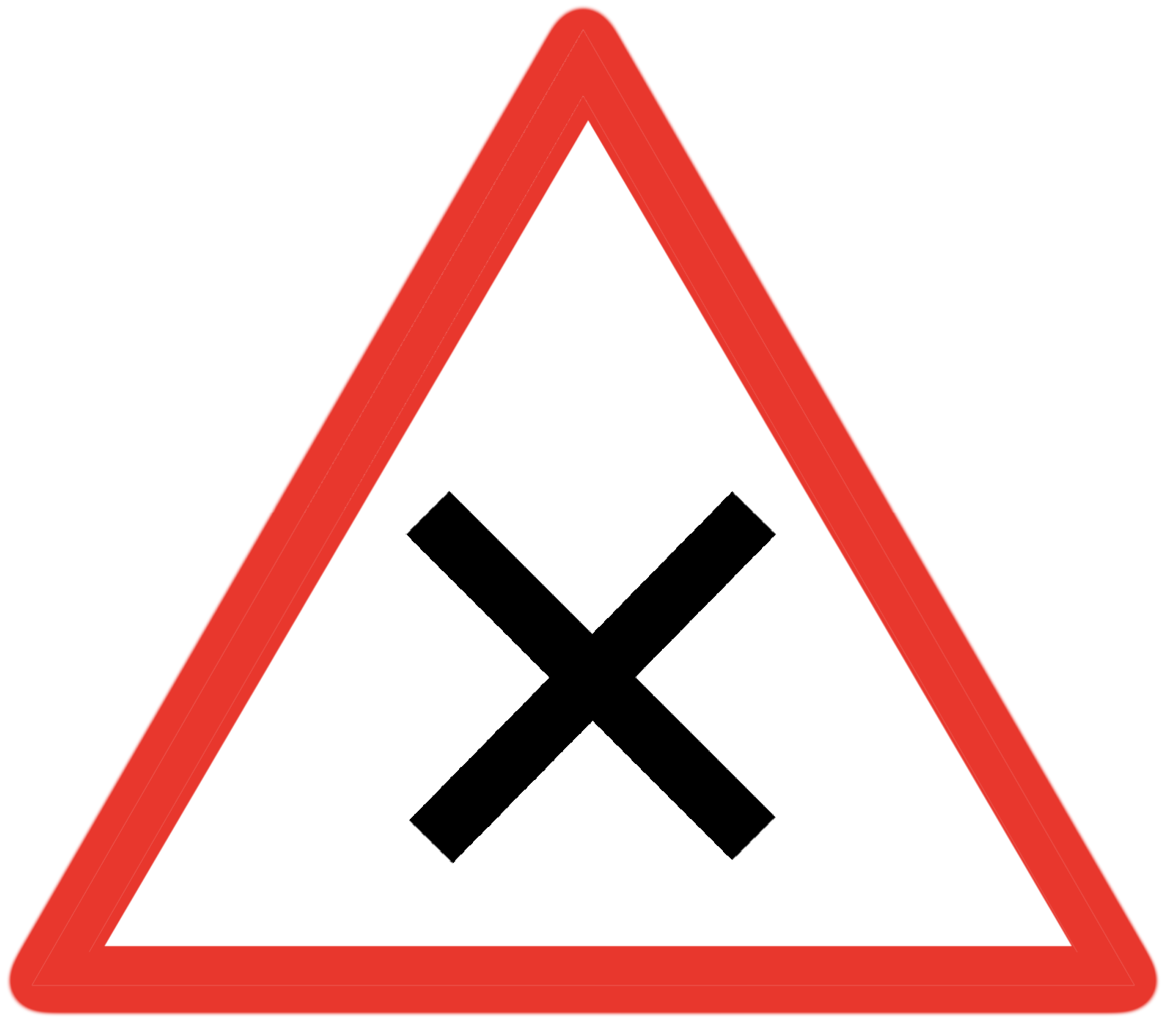
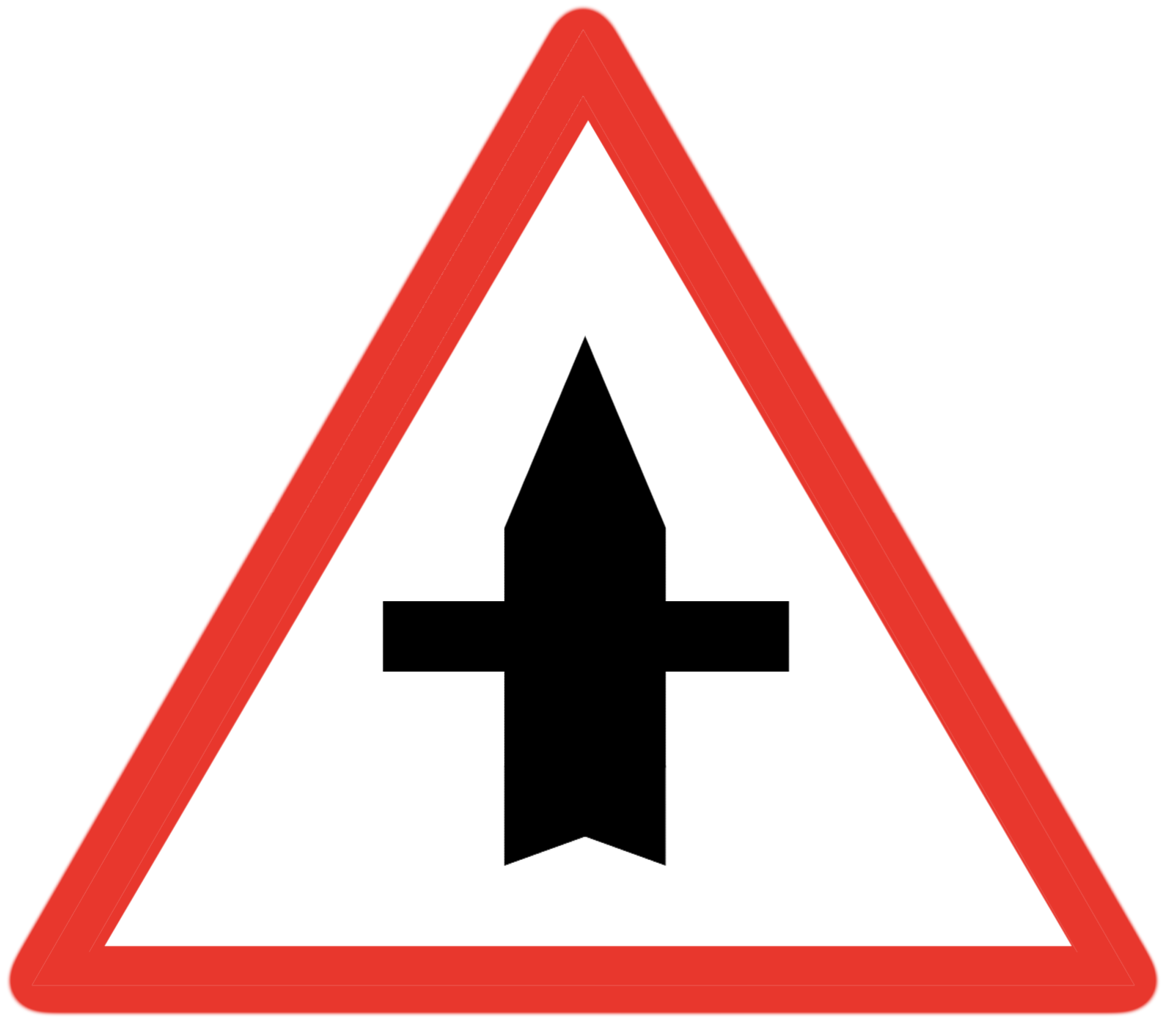
1. Priority goes to oncoming vehicles – Given all the narrow roads and small town centers, this is a big one here. When you come to a section of road where the red arrow is pointing in the direction you’re traveling, that means you stop to let oncoming vehicles pass. If your arrow is black, cars coming at you will stop so you can pass. Let’s just say, the locals get real mad when you mess this up.
2. Intersection coming up where you DON’T have the right-of-way – We have pretty standard right-of-way rules here in the US, but in France these rules can change depending on the situation. When you see this sign, it means the person on the right has right-of-way over other people. This is a French road rule known as ‘priorité à droite’.
3. Intersection coming up where you DO have the right-of-way – When you see this sign it means you’re approaching an intersection where YOU have the right-of-way and everyone else will (should) yield to you.
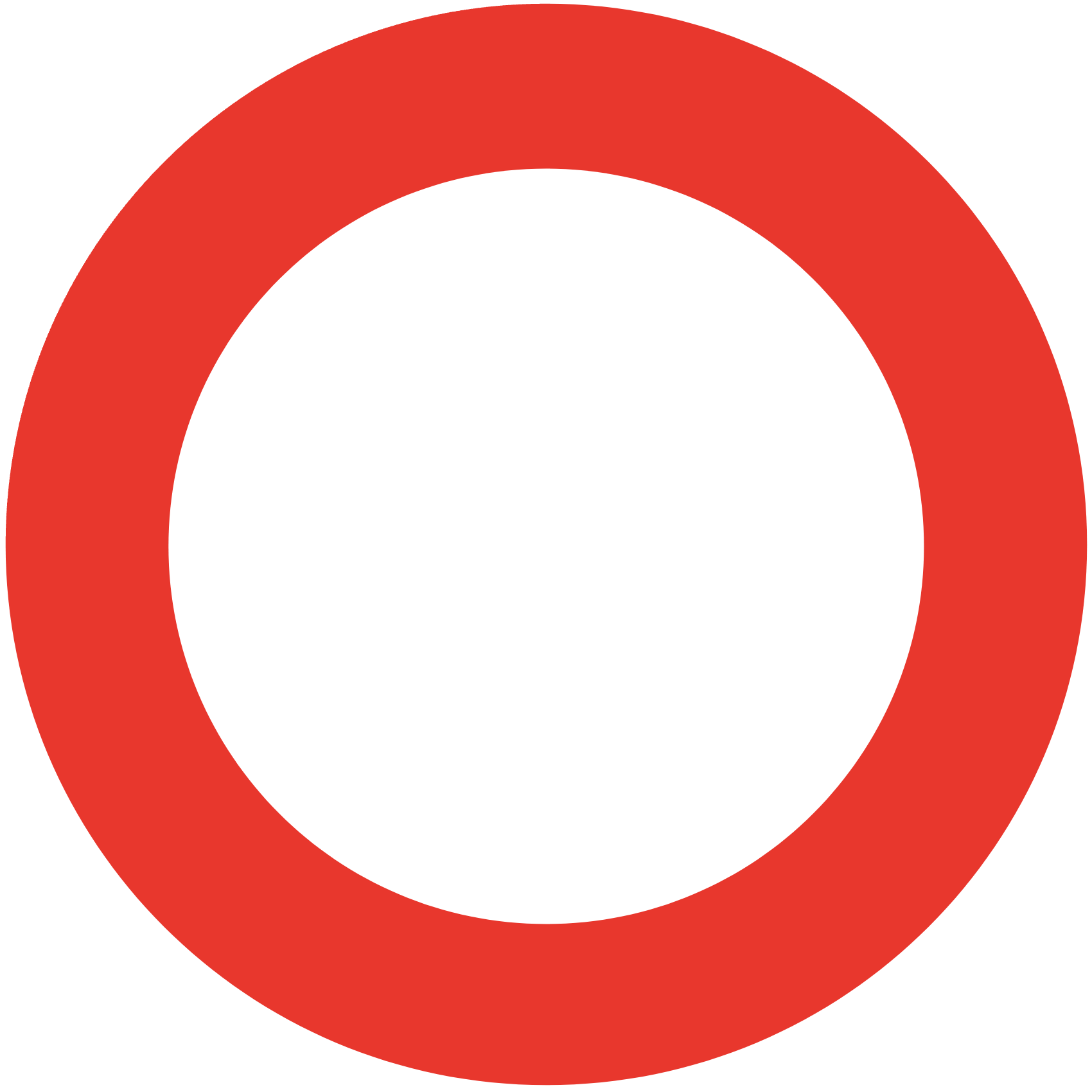
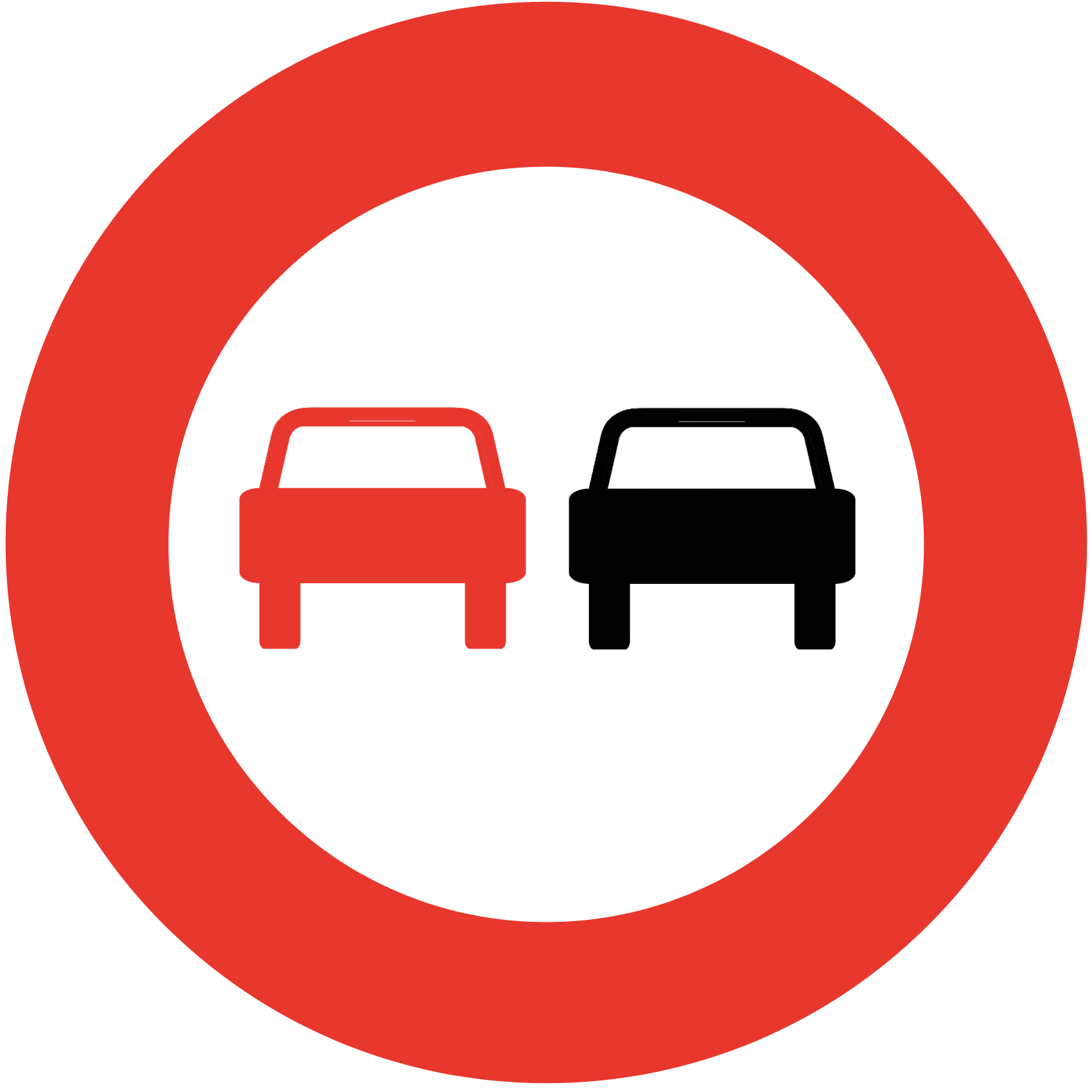
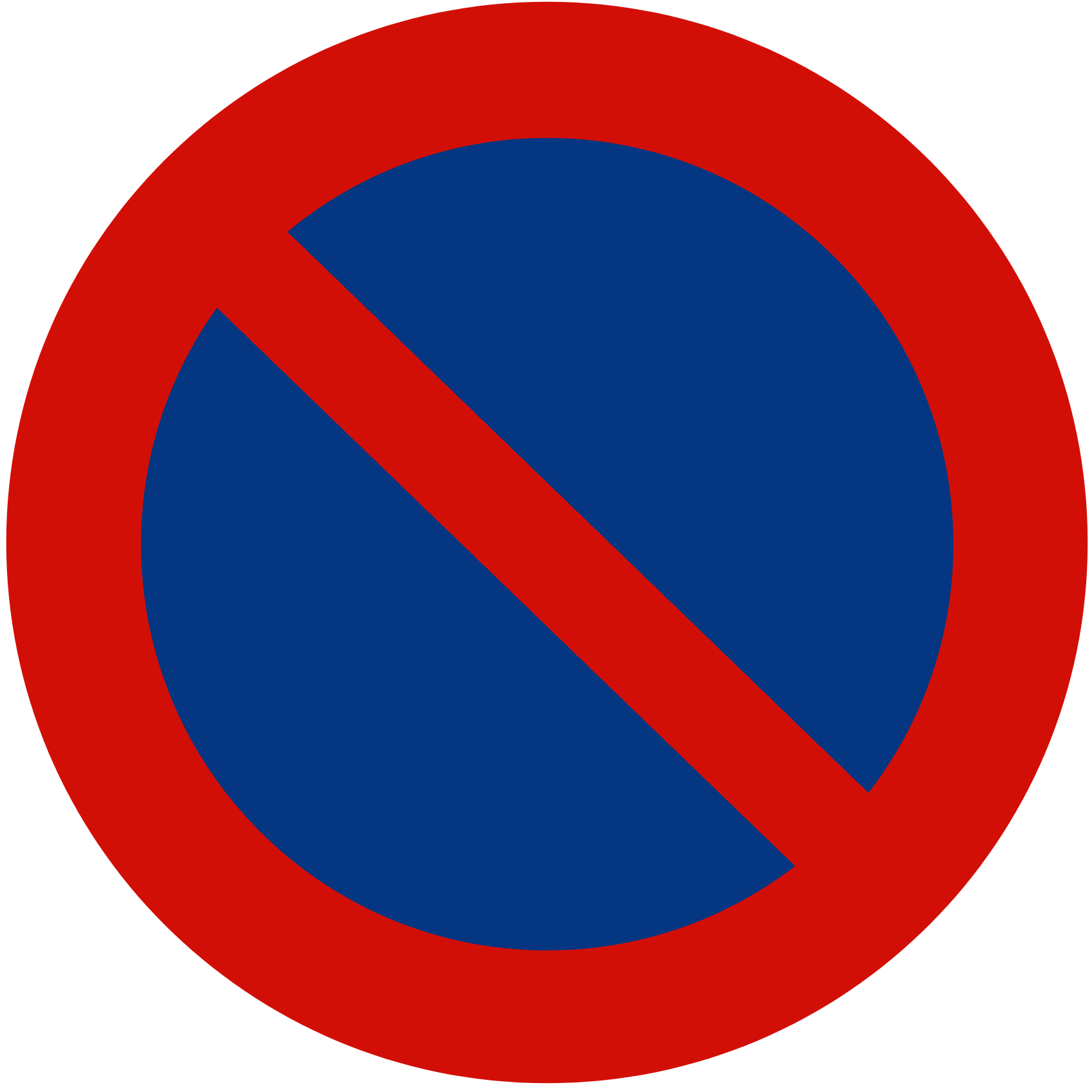
4. No vehicles – Whereas to us “No” is expressed by a circle with a line through it, in France it’s a red circle. If you see a red circle around a person walking, that means no pedestrians. Red circle around a bike = no bicycles. Whatever the red circle is around, that’s what’s prohibited. However, if you see a red circle around a plain white background, that means no vehicles. Don’t drive down a road with this sign!
5. No passing – Instead of the lines on the road telling you where it’s safe to pass, look for this sign. (This is the equivalent of a solid line here in the US.)
6. No parking – Blue circle with a red line through it means no parking. (When the blue circle has a red ‘x’ over it, that means no stopping.
For the full list of France road signs and what they mean, check out this page.
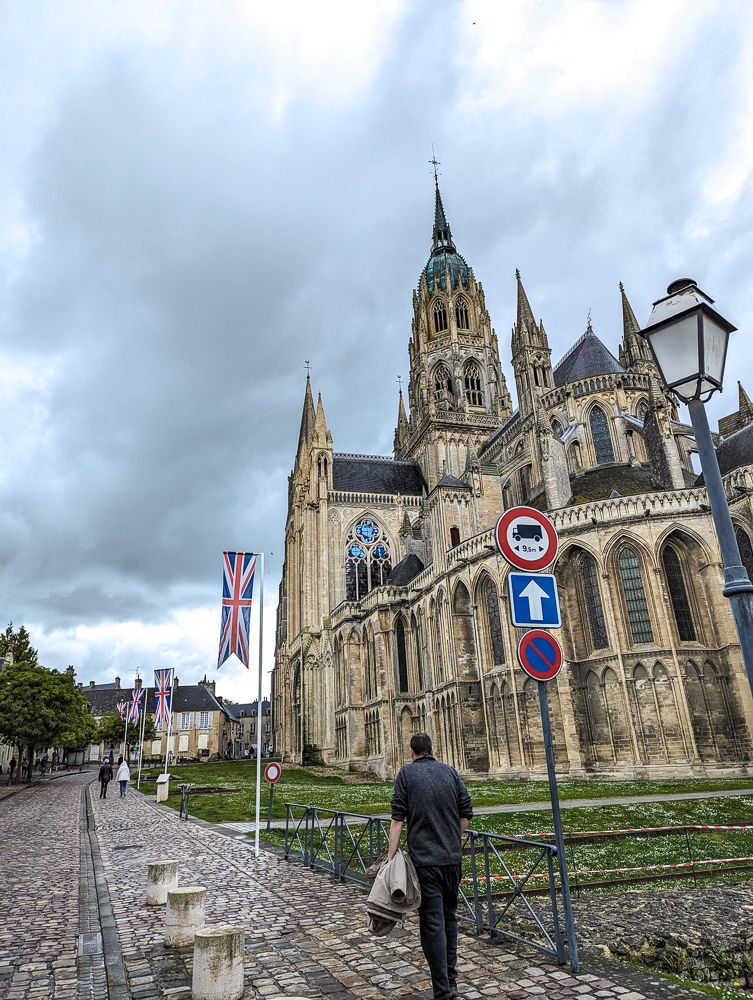
Tolls in Normandy
As of 2025, all toll roads in Normandy are now “free-flowing.” The toll booths have all but been removed at this point and you never have to stop to pay a toll. You still have to pay tolls of course, it’s just a different method now.
Now, you’ll see signs everywhere on Normandy’s main highways (A13 & A14) about the new “Flux Libre” toll system. Essentially, you just keep driving like normal and cameras take pictures of your license plate as you drive.
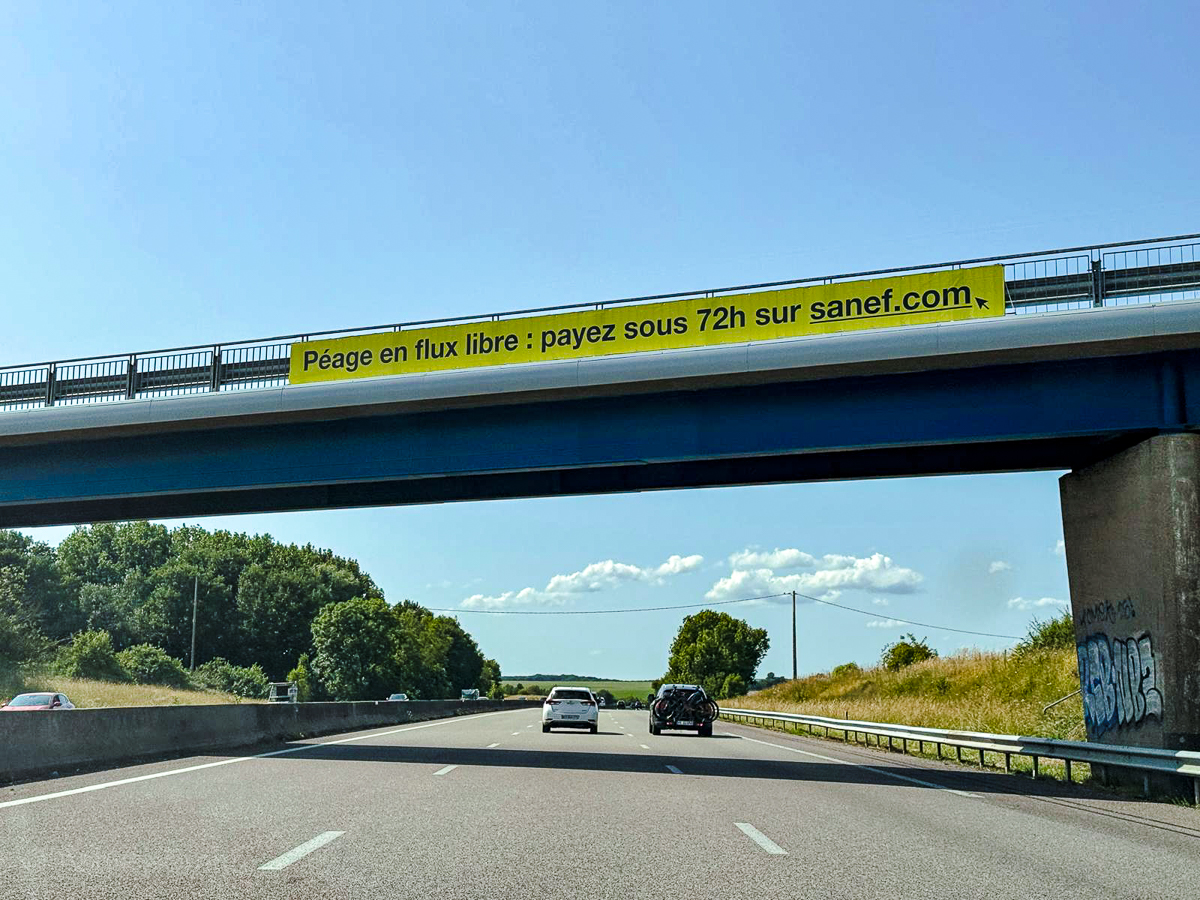
You have 72 hours to pay the tolls you’ve racked up which you can do online. This applies even if you have a rental car. (Unless your rental car comes with a télépéage pass which it probably does not, but it doesn’t hurt to ask when you pick it up.)
To pay the tolls, go to the website sanef.com. Enter your car’s license plate number and the dates you traveled and it’ll show you how much you owe. Don’t forget to do this! If you miss the 72-hour window, they’ll send you (your rental company) a bill for the tolls plus an additional charge of €90. Your rental company will probably add fees on top of that too, the way they do.
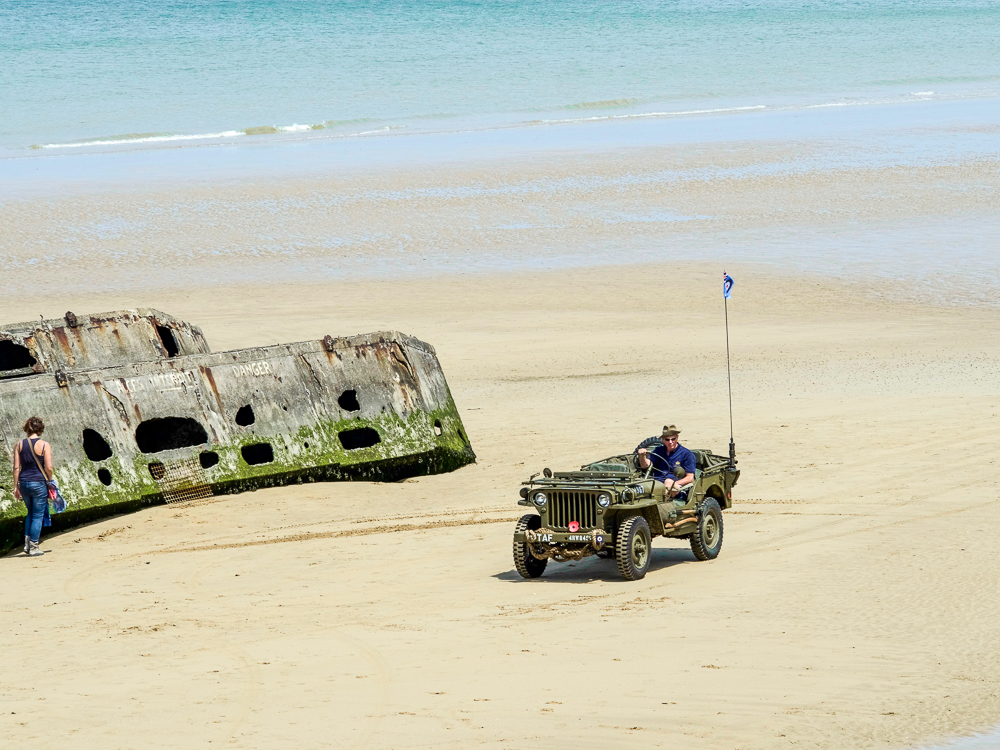
Speed limits in Normandy
Here’s the thing about driving in Normandy: France’s speed limits are wacky. Whereas here in the US all roads have their own designated speed limit (which can be anything), such is not the case in France (or in most of Europe actually).
Instead, they have standard speed limits that apply to more general (read: vague) situations. In other words, France has a whole four standard speed limits:
- 50 km/h for driving in urban areas (though some town centers get down to 30km/h around schools)
- 80 km/h for driving on open roads outside of cities (and D-roads)
- 110 km/h for two-way roads with a median / “dual carriageways”
- 130 km/h for interstate highways / motorways
Sometimes there’s a sign letting you know which situation you’re entering; most often there’s not. The more time you spend driving in Normandy, the more you’ll just sort of “learn” which speed applies.
Keep in mind that speed limits in France are in kilometers-per-hour, not miles-per-hour. Your rental car should already be set for kilometers, but definitely confirm this when you get in!
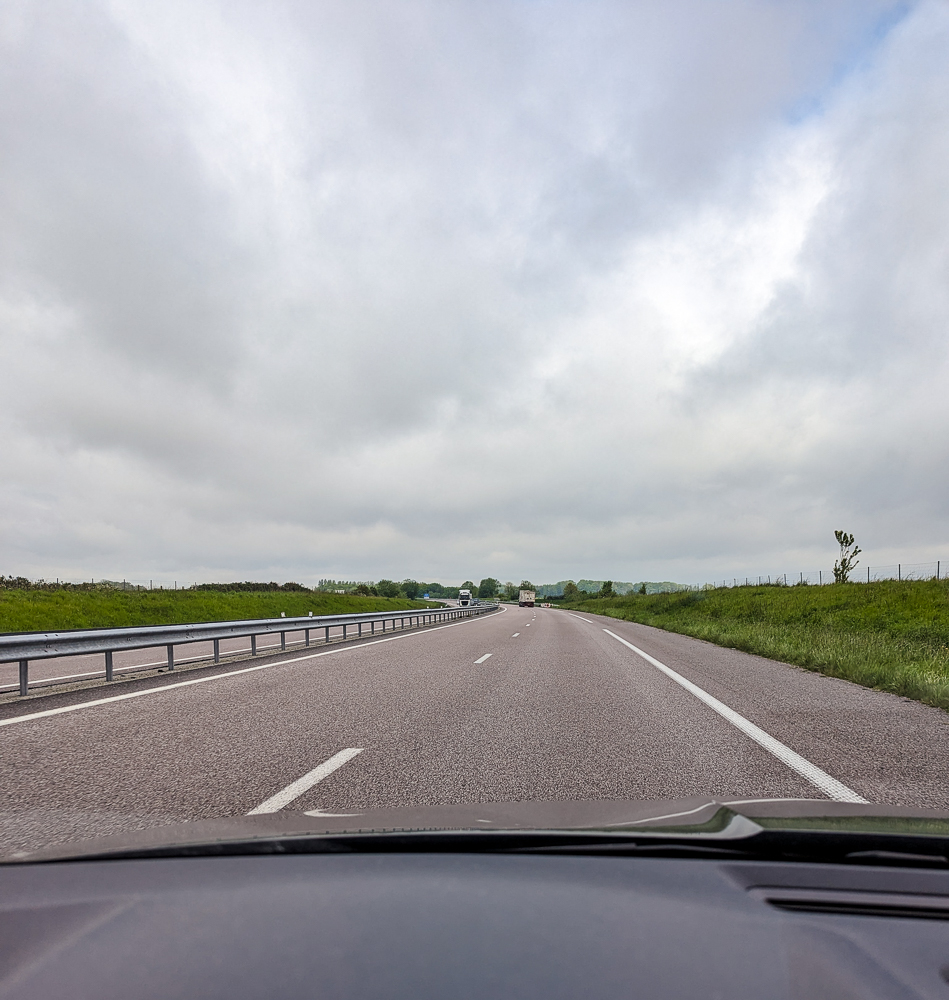
Speed limit exceptions
That being said, there are some exceptions. First of all, if you ever see a speed limit sign, follow whatever that speed says! There are always exceptions for construction or otherwise where authorities may introduce a different speed limit.
Secondly, weather can impact speed limits too. For example, if it’s raining or foggy, the speed limits above change to:
- 50 km/h for open roads outside of cities (instead of 80)
- 100 km/h for dual carriageways (instead of 110)
- 110 km/h for highways (instead of 130)
If you cross any border in your rental car on the way to Normandy, your car will (should) show you the speed limits in France when you cross over.
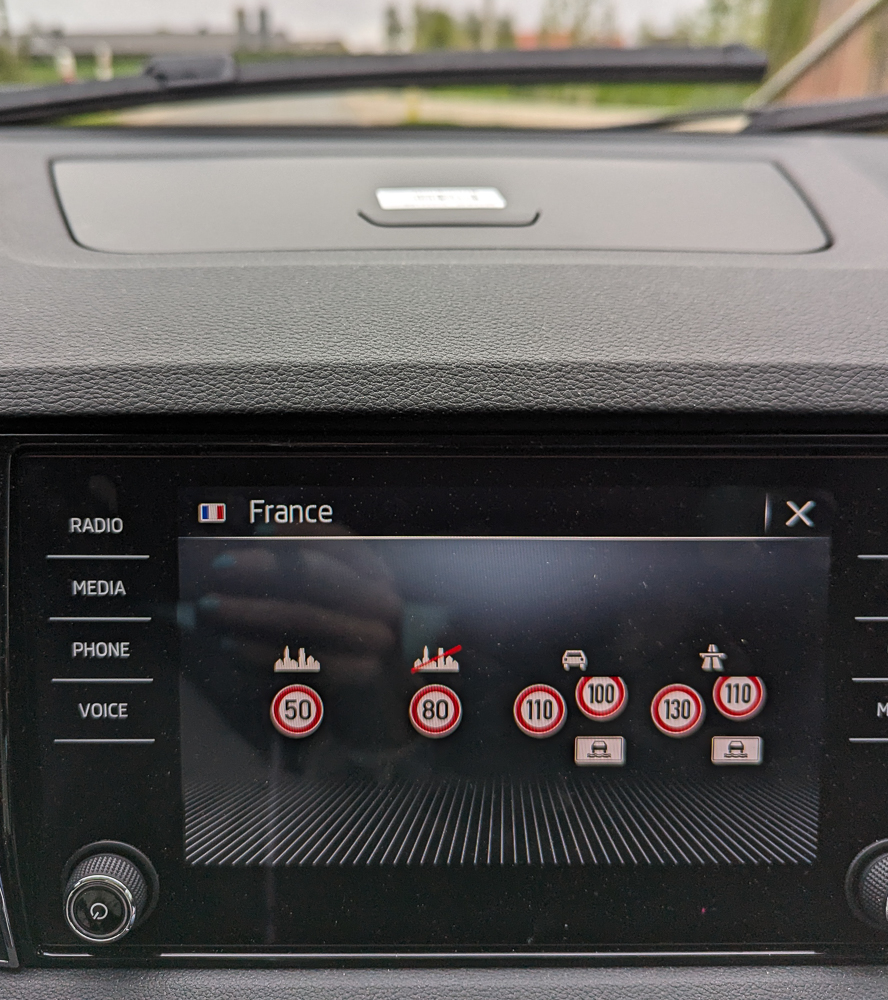
Speed cameras in Normandy
One thing that’s different about driving in Normandy than I’ve found other places is that there are speed cameras everywhere here. Honestly, I’ve never seen so many speed cameras in my life (like, combined). If you’re using the Waze app for GPS, it’ll tell you where all of them are at least, but wow there are a lot. Consider yourself warned.
Speeding tickets in Normandy
That being said, woohoo—I got a speeding ticket in Normandy in 2024. I guess I should say: “I did firsthand research into French speeding tickets so you don’t have to!”
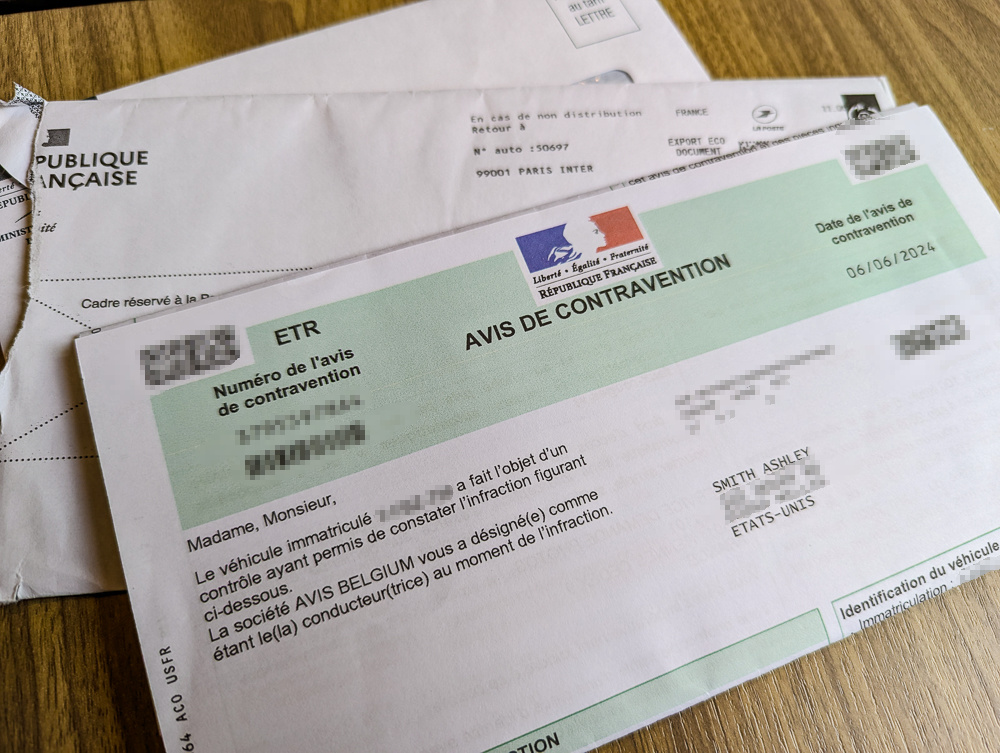
So yes, one of Normandy’s speed cameras got me. (My first speeding ticket in nearly 21 years, I might add.) On the off-chance you should also receive a speeding ticket while driving in Normandy, I’d like to share my experience so you know what to expect.
A speed camera took my picture somewhere between Ouistreham and Caen on May 9. I returned the rental car to the dealership in Belgium on May 10. I didn’t hear anything until a multi-page speeding ticket showed up at my house in Massachusetts on June 17 (that was dated as having been sent on June 6—how’s that for irony?).
The entire thing was in French so I had use Google translator to translate each page.
- Page 1 – Explanation of violation, explanation of fines, a bunch of other administrative information
- Page 2 – Explanation of all the different ways you can pay
- Page 3 – Form to request exoneration… that you have to fill out manually and mail back… to France
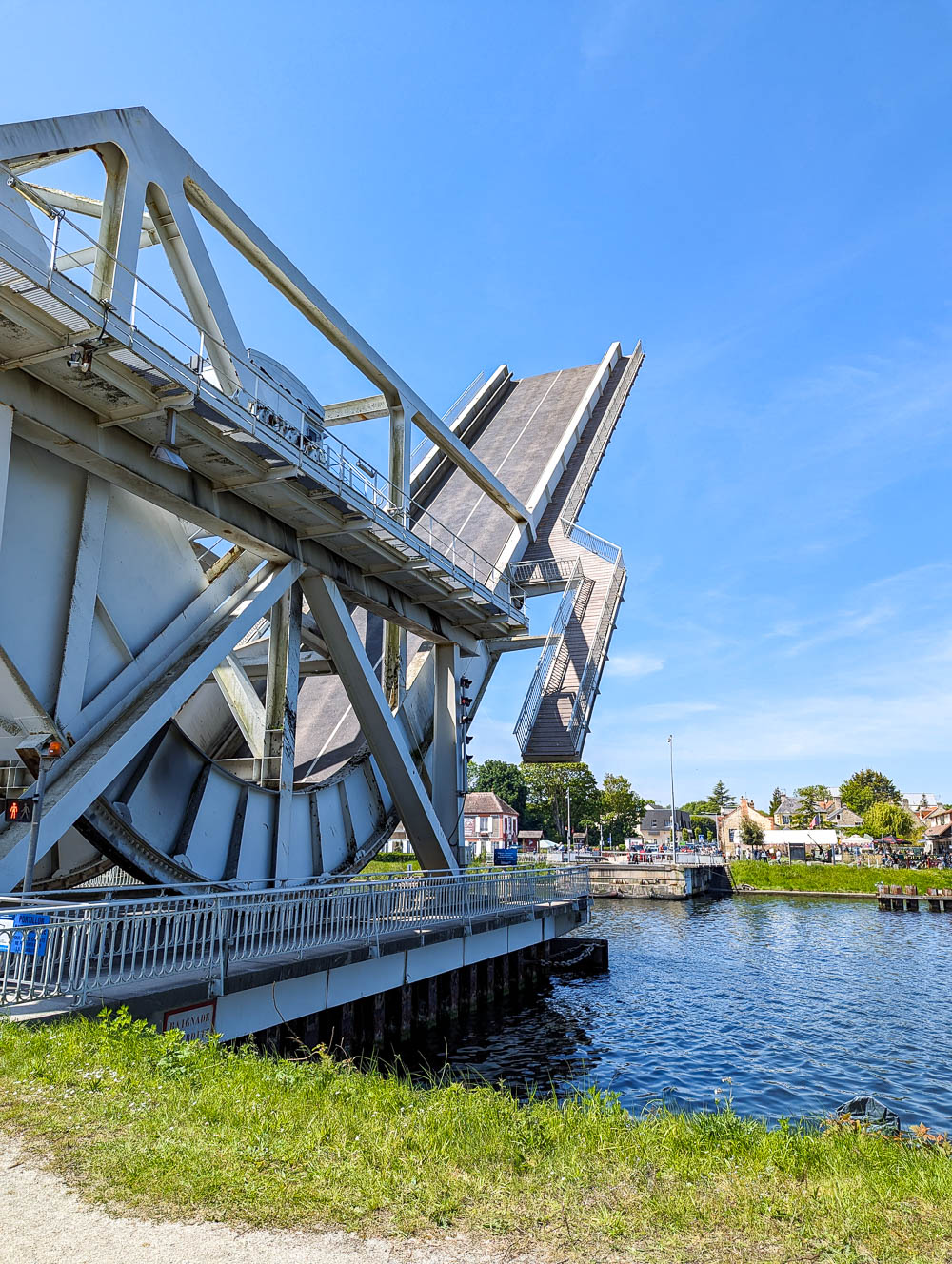
Speeding fines in Normandy
Normally, I’d absolutely request exoneration given the ridiculous situation in which I received the ticket, but I digress. In this case, it wasn’t worth the trouble so I just paid it online and it took a whole 3 minutes.
In case you’re curious, the breakdown of fees went like this:
- Lessened fine (45€) – If you pay within 46 days from [date on paper, 6/6 for me]
- Regular fine (68€) – If you pay within the period of 47-76 days from [date]
- Increased fine (180€) – If you do not pay or dispute it within 76 days from [date]
These specific fines reflect the fact that my excess speed was less than 20km/h over the maximum allowed. (Ahem, I was traveling 5 km/h over the speed limit. That’s the equivalent of 4 miles per hour. I am not amused.) If you’re caught driving more than 20 km/h over the speed limit, those fines go up.

Getting gas in Normandy
Getting gas in Normandy, France is also pretty straightforward. (Or at least it should be.) I had a couple issues here and there, but here are the most important things to know:
The green pump is regular gas
The main thing to know about getting gas in Normandy/France is that the pump with the green handle is regular gas and the black handle is diesel (or sometimes yellow like in the photo below). In the US, diesel is green and regular is black, so don’t mix these up!
Chances are your rental car will take ‘regular’ gas (not diesel) and probably the 95/E10 type. Your rental car company will (should) tell you when you pick it up. The cars I typically get in Europe also have a little sticker on the gas tank as a reminder. (See below)


Pay first, then pump
Just like in the US, at gas stations in France you are supposed to pay first and then pump your gas. (I thought this was universal until I drove around Poland for two weeks where it’s the opposite. So here’s your reminder.)
Gas costs more than you’re used to
Gas in France (and Europe in general) is much more expensive than you’re used to. I’m talking double what you pay here in the US. You definitely won’t be complaining about gas prices anymore when you get back home.
The photos below show what I paid for gas while driving around Normandy in May 2024. (They were similar in 2025.) Sure, €1.79 and €2.04 look great… but that’s per liter, not per gallon. When you change euros to dollars and liters to gallons, that comes out to $7.26 per gallon at one station and $8.29 at another. I have no idea what the price of gas will be during your visit, but this is just a warning to expect much higher prices.
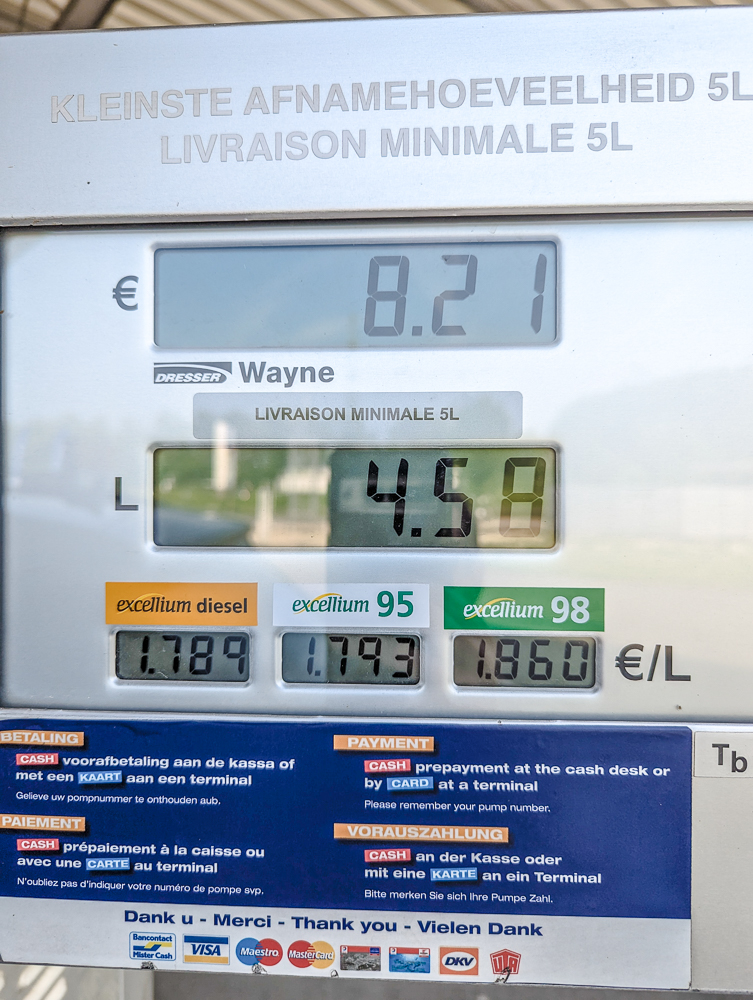
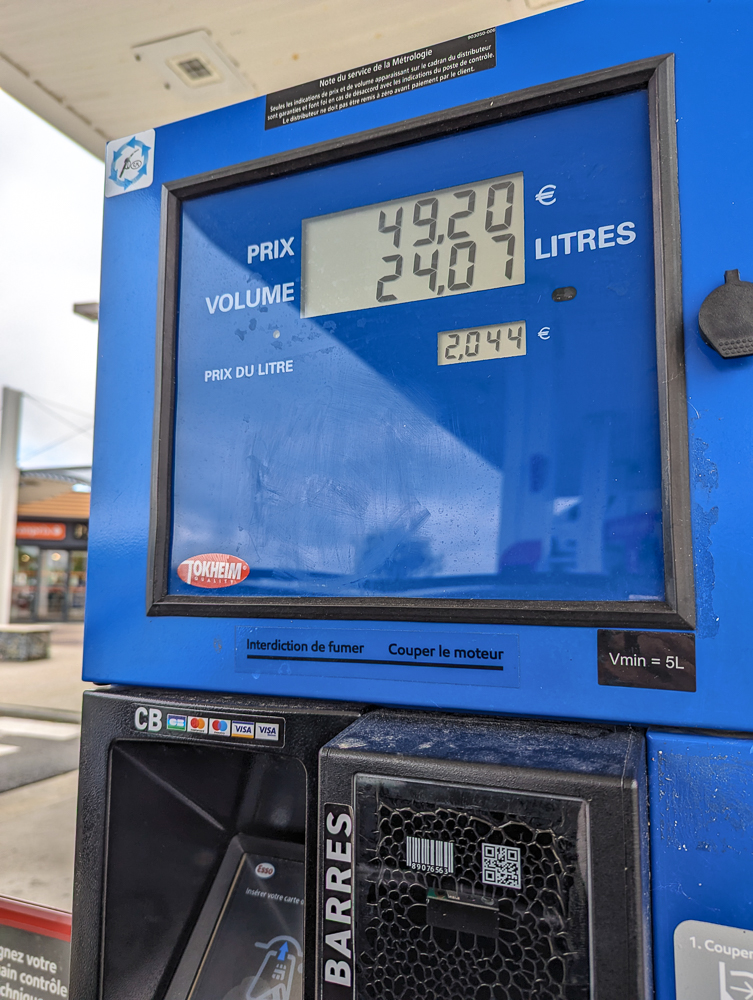
Payment issues
The issues I had with getting gas in Normandy all centered around some weird payment snafus. There’s one particular computer system that most gas stations use that my credit cards weren’t compatible with. (I’ve heard from others driving around Europe lately who have had the same issues, so it’s not just me.)
Some gas stations use a different system which worked fine. It’s all random though; it’s not like one particular brand of stations use one kind and others use another. And it had nothing to do with my credit cards. I tried Visa, Amex, Mastercard, and even a credit card from a European bank. There were no common denominators.

This whole ordeal is a long story, so I’ll just sum up the troubleshooting. If you find your credit cards are getting the dreaded “Card is invalid” error message, here’s what you should remember:
- Only go to gas stations that have a shop with a human employee so you can pay at the counter. You may have to pay more than you need to, then get your gas, and then go back in and get the difference back in cash.
- Have enough cash with you in case you need to pay for your gas in cash
- Even at the stations without a person, you can still pay in cash at most of them. Some of the credit card machines also have slots to insert cash. Some stations have a separate machine that acts like a reverse ATM—you insert cash and it gives you a ticket. Then you scan that ticket at the pump which acts like a credit card. Note: These machines don’t give change so don’t insert more cash than you think you need in gas.
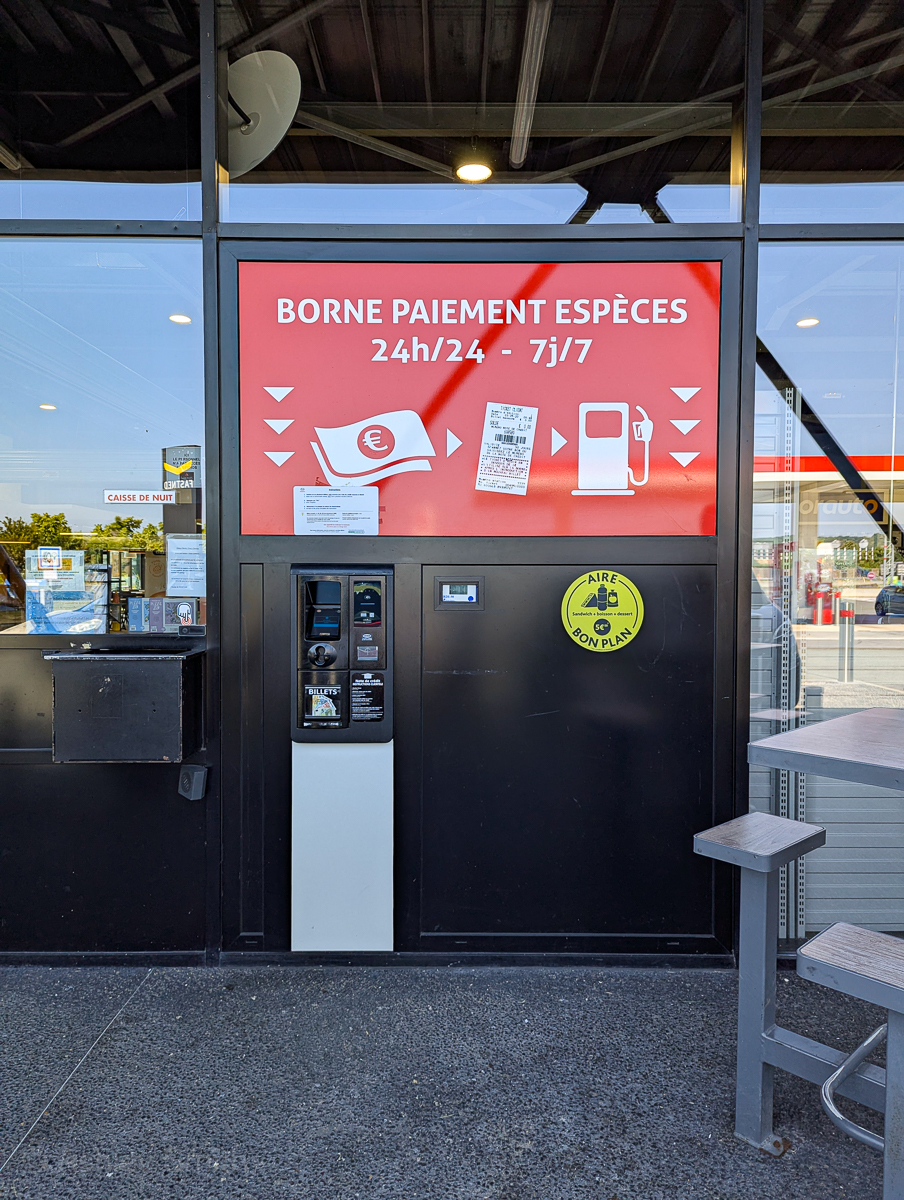
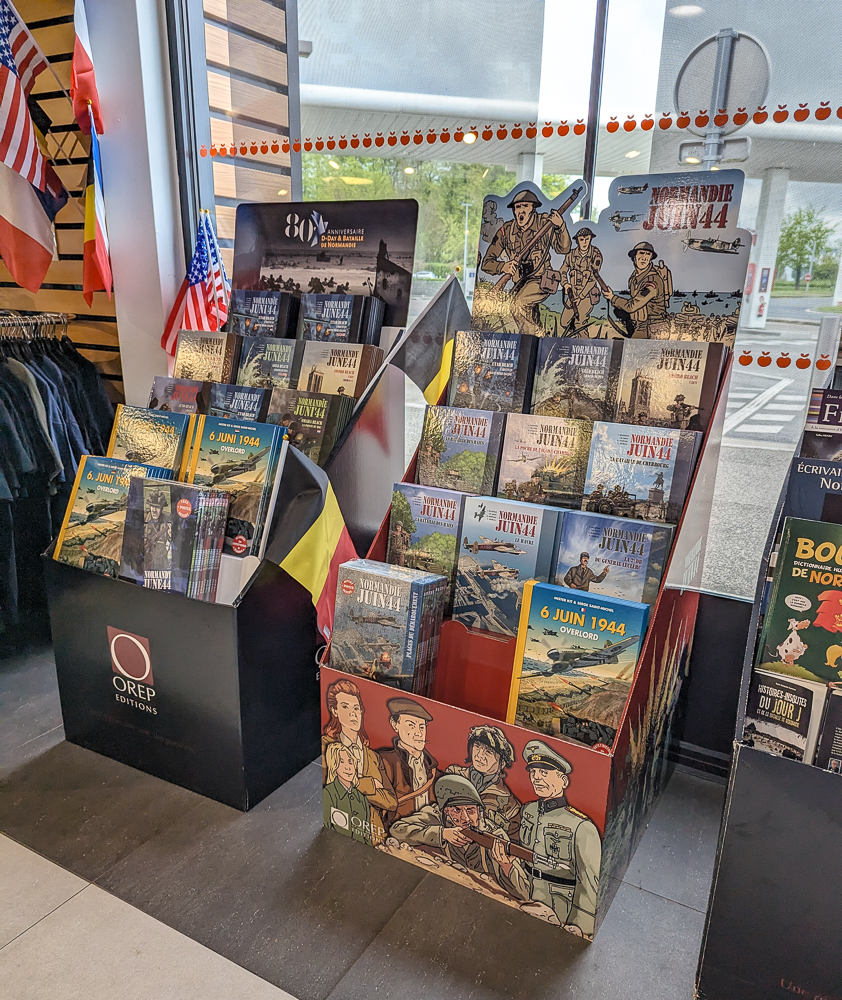
Driving in Normandy with Waze & Google Maps
You’ll definitely need to use a GPS app to get to all the sites on your Normandy itinerary, but don’t expect them to work perfectly 100% of the time. Like I said, many of the historical sites are in pretty remote/undeveloped areas. That means you’ll lose your GPS and your phone reception quite often. So, here are a few things you need to know about driving in Normandy with Waze and/or Google Maps:
You’re going to lose cell reception
There’s really no way around it; you’re going to lose cell reception while driving in Normandy. I visited a lot of super remote areas on my latest visit in the name of WWII research, and several times I got stuck having to use an actual map to get myself back to the main roads. So, two pieces of advice:
1. Definitely have an actual paper map with you. I would go ahead and pick up this Michelin Normandy map so you’ll have it when you get here, just in case.
2. You can preload your destinations into your GPS app so you can still use these apps “offline.”
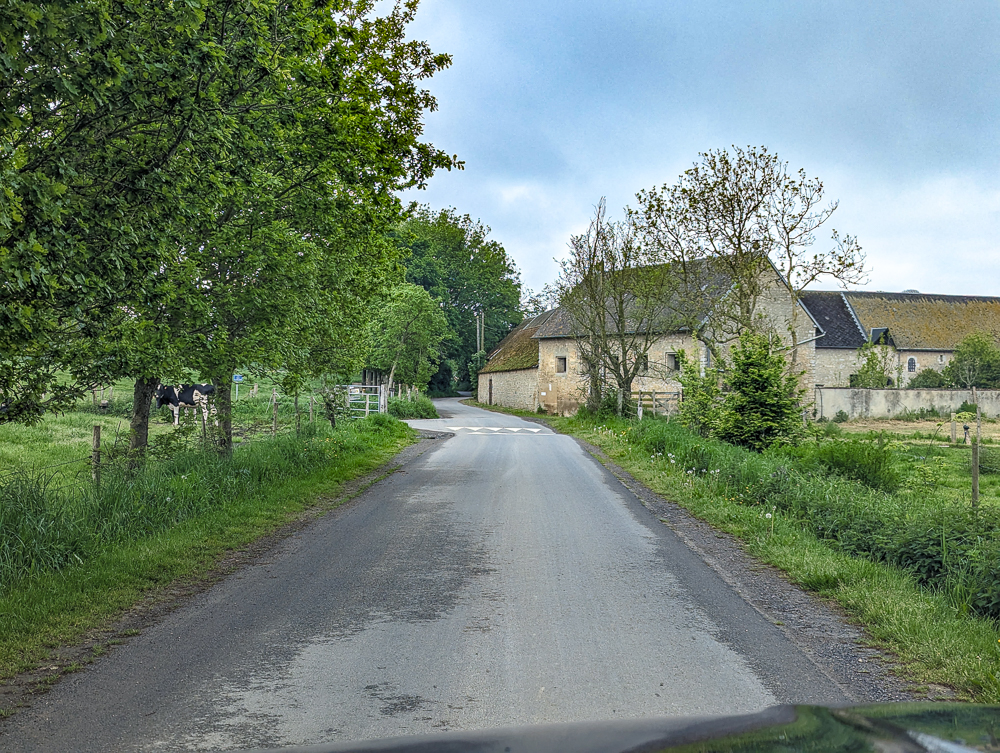
Whatever you do, don’t forget to pack your car charging cord to keep your GPS on your car screen and your phone charged.
Preload your destinations
There were several times when I was out of cell range and my Waze app switched to “offline” mode. Luckily, it could still get me to where I was going. However, if I turned the car off or had to restart the app toward a new destination, without reception I wasn’t able to search for or enter a new address. BUT, I could choose one from the “recent” menu.
From then on, I began entering all my destinations for the day into Waze while I was still connected to the Wi-Fi at my hotel. That way, if I got stuck in a no-reception area, all my destinations were already available in the “recent” menu and I could still get to all of them in “offline” mode.

Check your routes
Another tip for driving in Normandy is to check your full routes before you take off. Both of these apps have a tendency to take you down some “roads” that aren’t really roads in the name of shaving off a few minutes. Which is how I (and several other cars) ended up driving through a literal wheat field to get to Sword Beach even though there were proper roads all around.
When you enter a destination into your app, scroll through it to make sure it keeps you on actual proper roads, or at least on roads you’d feel comfortable driving. You may need to make your own changes. In 2025, Google Maps tried to lead me over several pedestrian-only bridges that weren’t even wide enough for a car to begin with.
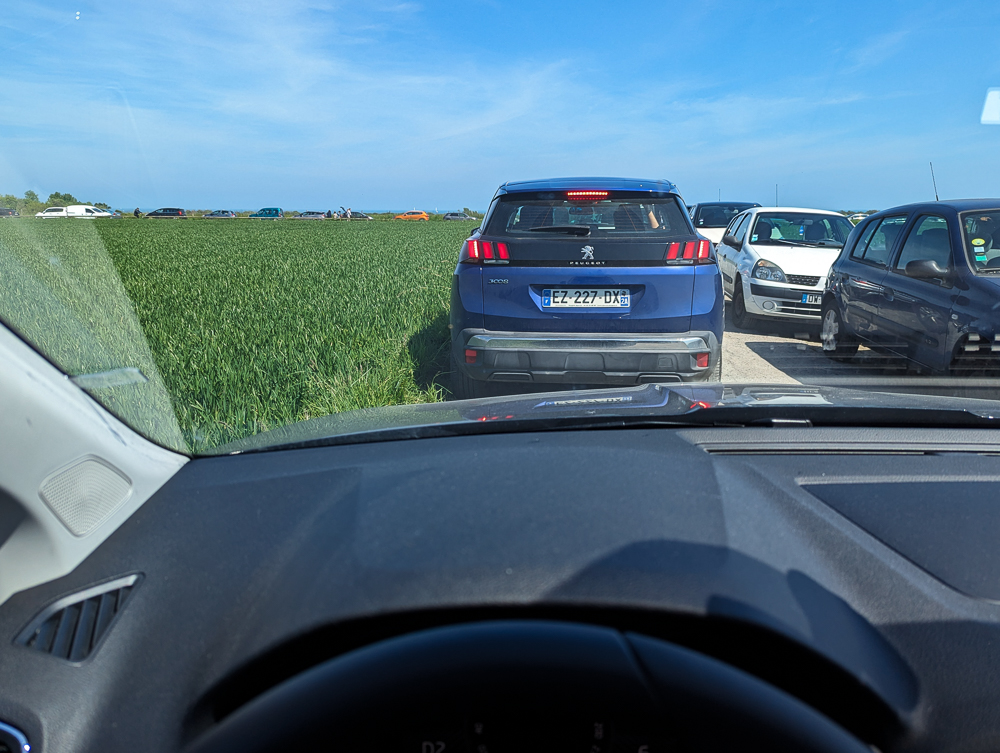
Parking in Normandy
While out exploring the many D-Day sites in Normandy, you’ll find most of them offer free parking, but you’ll still have to pay to park in town centers and a few other places here and there.
For instance, you can park for free all around Utah Beach, Omaha Beach, Juno Beach, Normandy American Cemetery, and most of the museums in these and the other 2 landing sectors.
You’ll have to pay to park at the British Normandy Memorial, in the town square at Sainte-Mère-Église (to visit the Airborne Museum), and pretty much everywhere in the town of Arromanches. Bayeux has a mix of paid parking areas and some small free ones.

The general rule of thumb is:
- If the museum or memorial has its own parking lot, you won’t have to pay.
- If you have to park in a town center to visit a museum or memorial, you will have to pay.
There are, of course, exceptions. Like the British Normandy Memorial where you have to pay for parking, and the America & Gold Beach Museum where you can park out front (in the town square) for free.
Parking machines in Normandy
All paid parking areas in Normandy use the same payment machines. You’ll enter your license plate number, choose your duration, insert payment, and a paper ticket will spit out that you need to leave face-up on your dashboard. Be sure to take a picture of your license plate and always have it handy; you’ll use it a lot.


Driving in Normandy: Visiting the D-Day sites
And since you’re here specifically to visit Normandy’s D-Day landing zones, here are some tips and useful info specifically for visiting these incredible WWII sites:
Normandy D-Day memorials
Most of Normandy’s roadside monuments and memorials have small areas where you can pull off the road to get out of your car and check them out up close.
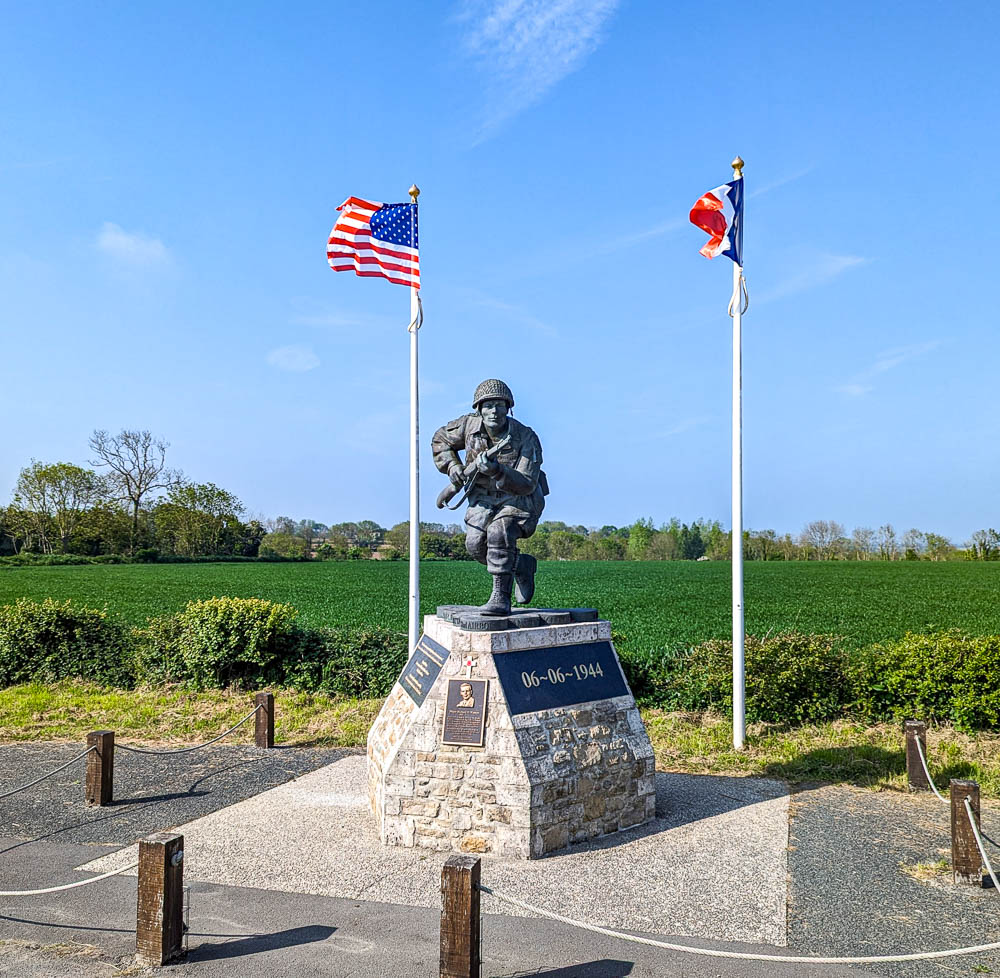
Parking at Utah Beach
Parking is both plentiful and free at Utah Beach. You can park once and visit the Utah Beach Landing Museum, tons of monuments and memorials, the beach itself, have lunch at Le Roosevelt, and more.
Put the “Utah Beach Landing Museum” into your GPS and park wherever you can find space—in one of the small parking areas, in the grass along the fence line, etc. I’ve marked some good parking areas on the map at the top of this page.
To visit the Airborne Museum you’ll have to park in the Sainte-Mère-Église town center which is a paid lot. The good news is that you can visit the church from here as well as several other monuments, memorials, shops, and restaurants.
Parking at all other Utah Beach museums is free—the D-Day Experience and Dead Man’s Corner, the World War II Museum, the airship hangar, the batteries, and more.
Check out everything you can see and do in the Utah Beach landing zone here.
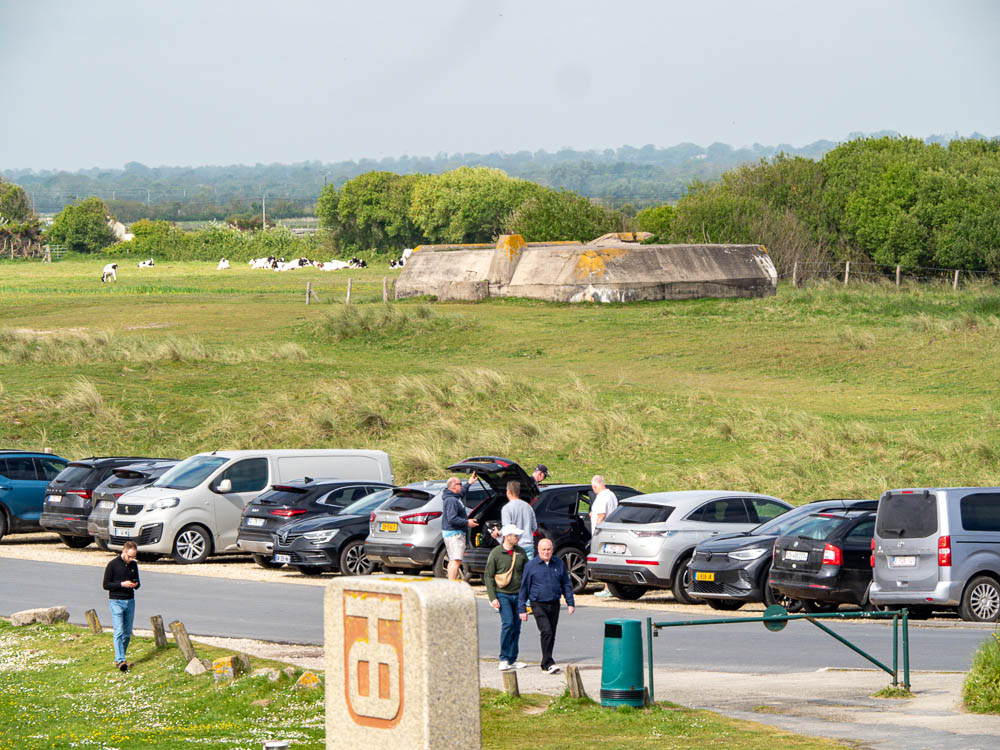
Parking at Omaha Beach
There are plenty of free parking opportunities in and around the main Omaha Beach memorial areas. Just behind the Les Braves memorial are two parking lots. If those are full, you can drive up the beach toward the Charles Shay memorial and park for free all along the road here. (Unless otherwise marked as this is a residential area; always pay attention!) There’s also a dedicated parking lot near the Ever Forward and National Guard Memorials too.
You can also park for free at Normandy American Cemetery and Pointe du Hoc, but do take note of where you park because these parking lots are big and can be somewhat chaotic.
There’s free parking at Omaha Beach’s many museums too—the Overlord Museum, D-Day Omaha Museum, Normandy Victory Museum, and the Museum of Underwater Wrecks. Parking is also free at the Maisy Battery and La Cambe German War Cemetery.
Check out everything you can see and do in the Omaha Beach landing zone here.
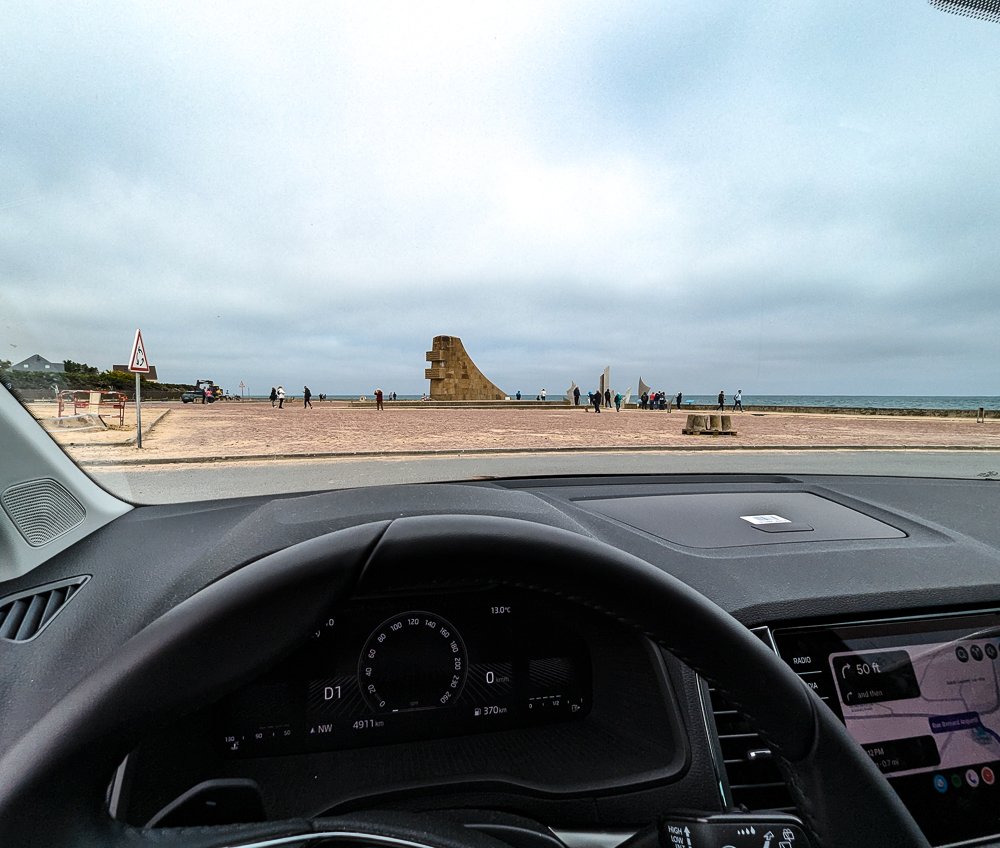
Parking at Gold Beach
Parking at the British Normandy Memorial is paid but free at the other museums in this sector and at the Longues-sur-Mer battery.
If you’re looking to visit the museums in Arromanches, you’ll also need to pay to park. You can park in several smaller lots near Arromanches town center to visit the Musée du Débarquement, or you can pay to park in the large lot at the top of the hill next to Arromanches 360°. You can easily walk between the two museums in about 10 minutes. (But note that this hill is pretty steep.)
If you plan to visit Bayeux, you’ll find a mix of paid and free lots (if you know where to look). You can also park for free at the Memorial Museum of the Battle of Normandy. From here, you can also walk to the War Correspondent’s Memorial and the Bayeux War Cemetery. If you’re cool with walking a little bit farther, you can also get to the Bayeux Tapestry Museum and town center in just 15 minutes.
Check out everything you can see and do in the Gold Beach landing zone here.
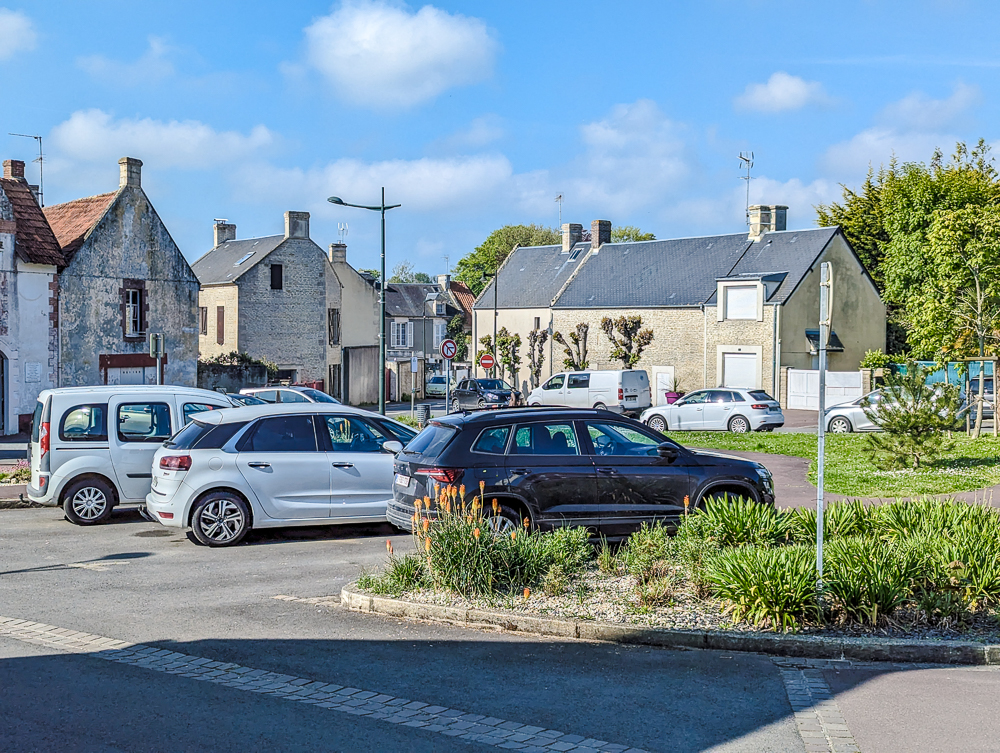
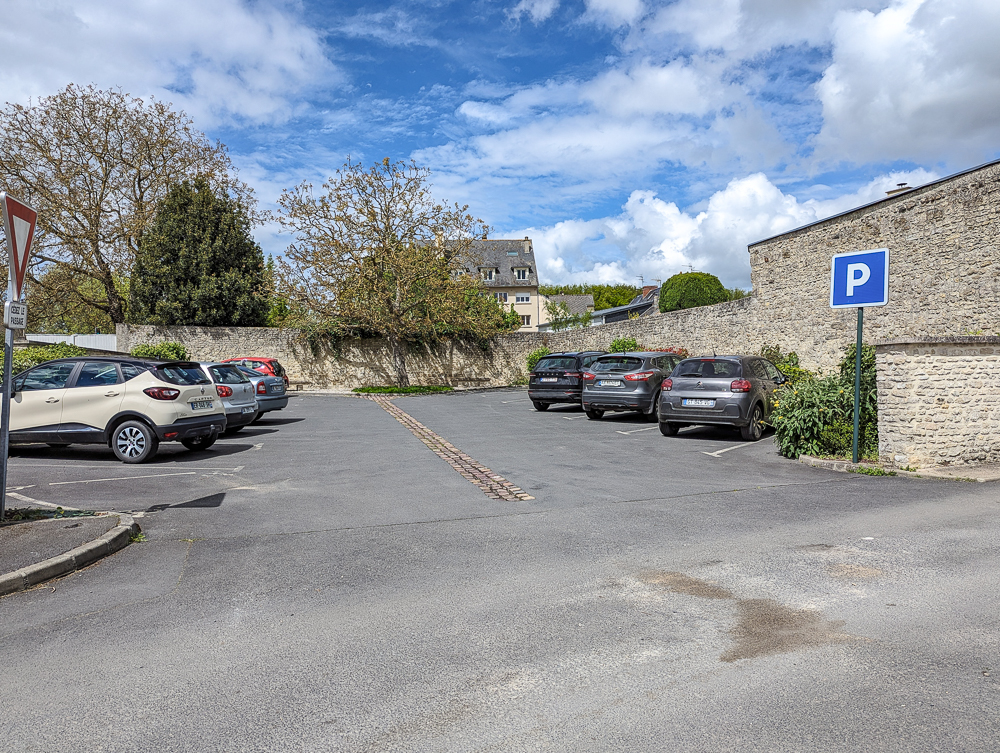
Parking at Juno Beach
The parking area at the Juno Beach Landing Museum tends to fill up fast but there are plenty of free parking areas just a short walk away. You can park up by the beach (near the Lorraine Cross) as well as a little further down in the unpaved lot along Avenue du Général de Gaulle.
From here you can visit the museum, the German bunkers, and all the monuments and memorials at Juno Park, restaurants, and other areas on foot.
The Radar Museum has free parking and there are a couple of small parking areas near the Canada House and beach area as well. They’re free but spots are limited.
Check out everything you can see and do in the Juno Beach landing zone here.
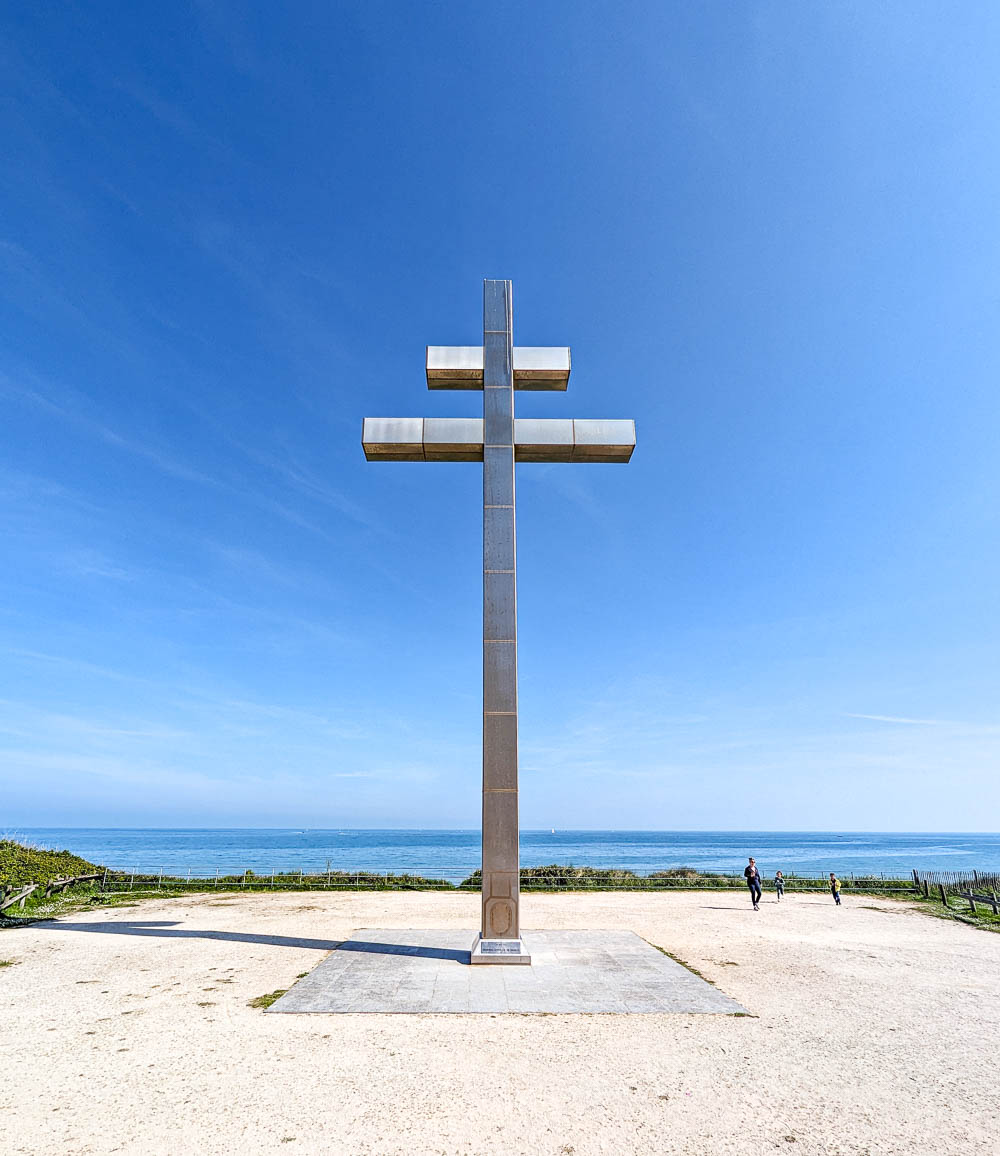
Parking at Sword Beach
Unlike Utah, Omaha, and Gold Beaches which are largely undeveloped, the Juno and Sword Beach areas are pretty built-up with lots going on here. Ergo, getting in and out of the beach areas and finding parking can be a challenge unless you arrive early in the day.
The Sword Beach area can get crowded pretty early on beautiful beach days so just be aware you may have to park farther away and wait in some traffic getting in and out.
Otherwise, parking at the Memorial Pegasus museum is free and easy. From here, you can check out the other area memorials, the historic cafés, and the original Pegasus Bridge. The Caen Memorial Museum also offers free parking and even charging points for electric cars.
Le Grand Bunker is in the middle of a residential area so parking can be difficult during busy times. There are paid parking spots on the streets around the museum and at the end of the street along Maritime Boulevard (across from the Commando N°4 Museum). The Falais Memorial is also in a town center but there are lots of parking opportunities in the area.
There are both paid and free parking lots up by the beach near the Bill Millin and D-Day 70th anniversary memorials.
Check out everything you can see and do in the Sword Beach landing zone here.
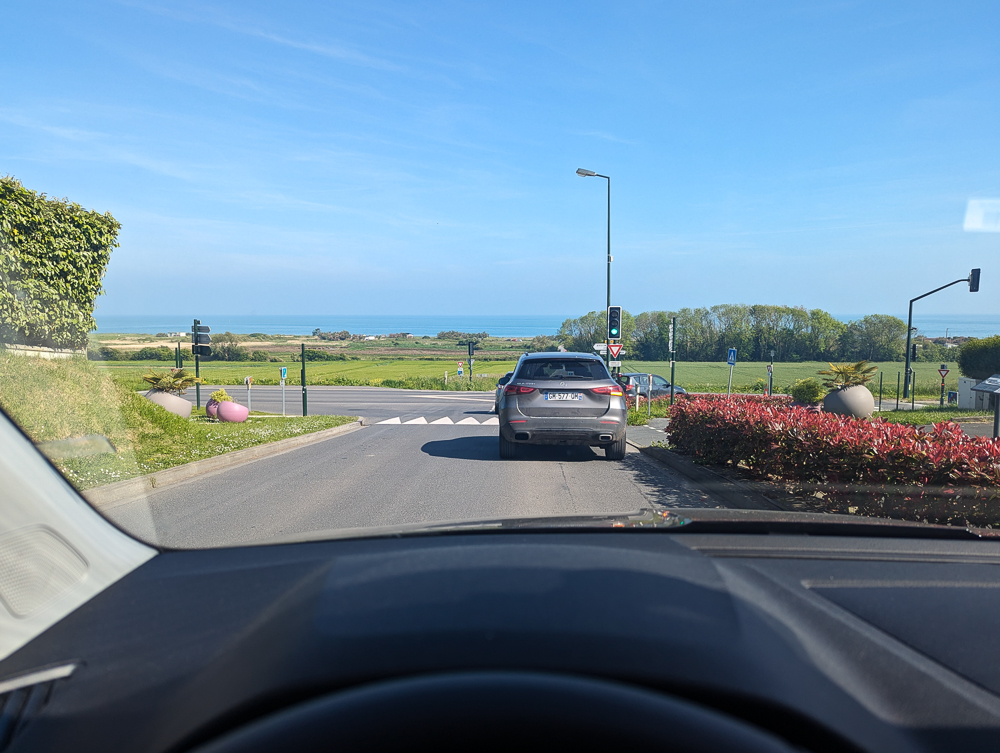
More info for your trip to Normandy
- Hotels: Read reviews and find great places to stay here on Booking.com (my personal favorite). Expedia and Hotels.com usually have good deals too. VRBO is best for vacation rentals.
- Rental cars: Check out the best rental car deals here.
- For Normandy tours: Check out the best local options and the best day tours from Paris here.
- Travel planning: Pick up a Normandy guidebook and this super helpful France customs and culture guide.
- Be sure to watch Saving Private Ryan, The Longest Day, and Band of Brothers before your visit!
- What else have I covered in France? Check out my France archives.
Like this post? Have questions about driving in Normandy? Let me know in the comments below. Have fun in France!

Save this info, pin this image:
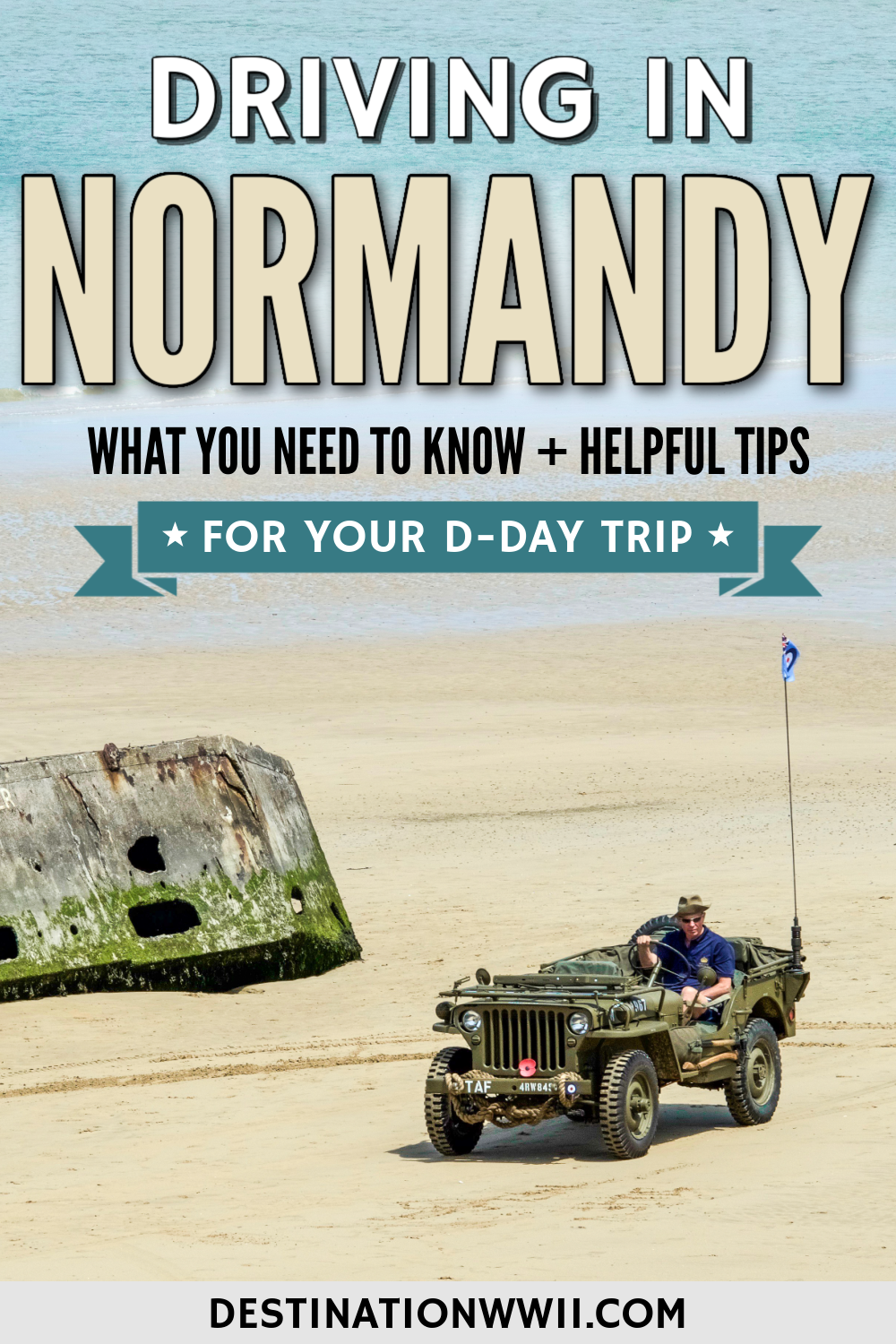
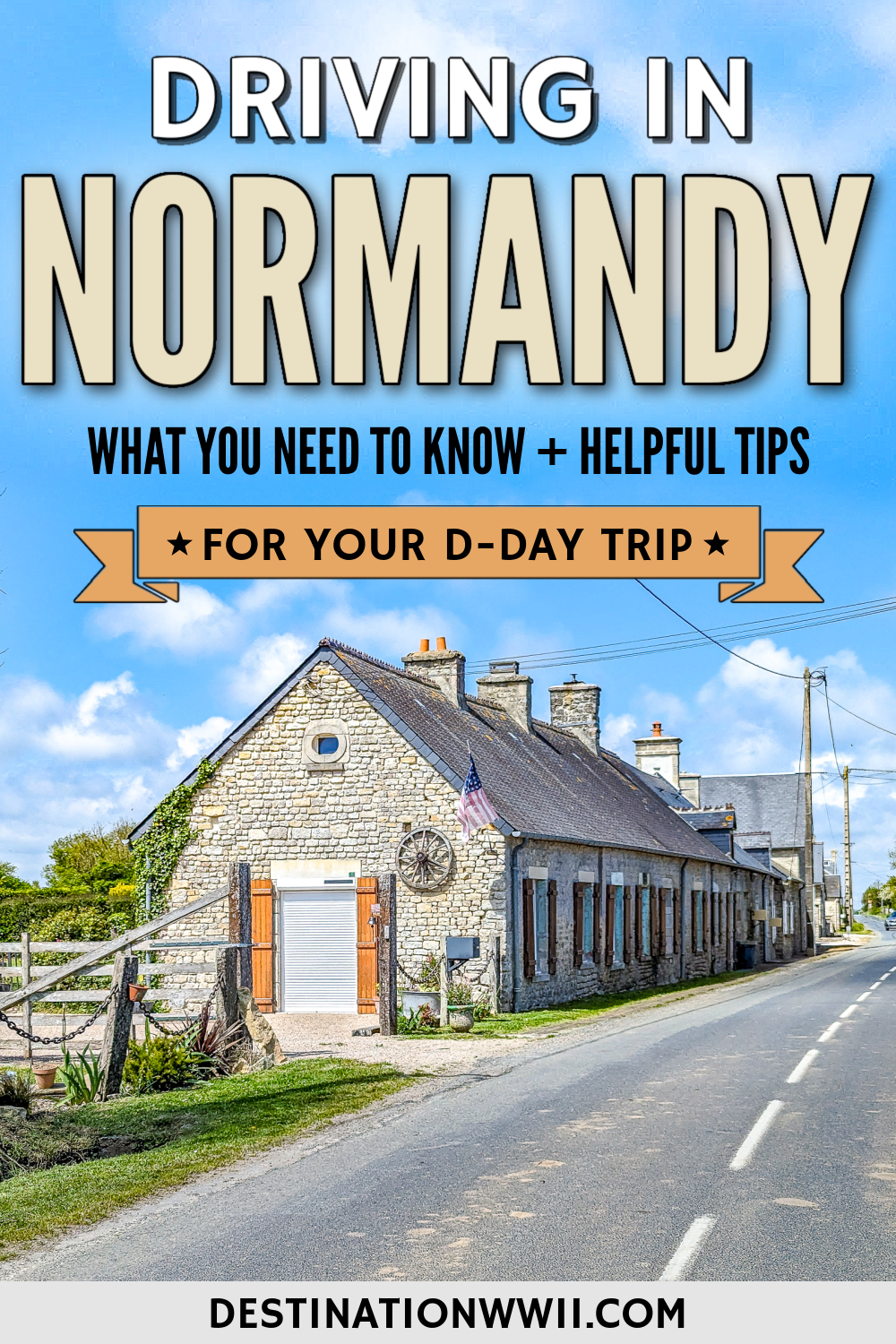

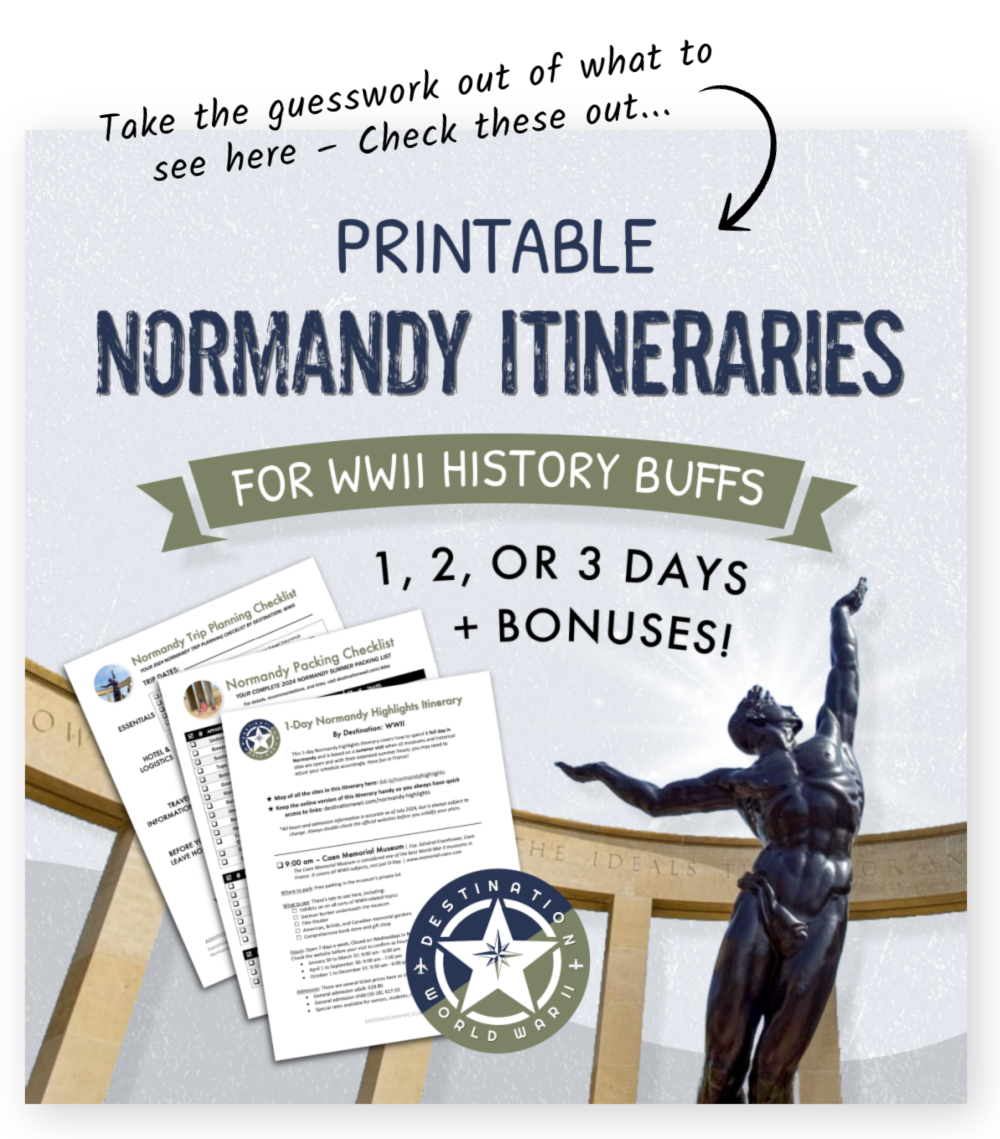


Ashley, I just wanted to thank you SO MUCH for this post and website!!! I feel so much more prepared for my weeklong road trip to northern France now!
Hi Amanda!That’s great – I’m so happy I could help! Have a great time in France 🙂
Ashley, oh my goodness, thank you so much for the fabulous information you have shared!
My husband and I are from the US, retired and living in Portugal for a few years now. We are history buffs (in a VERY layman’s sense!) and just decided to take a drive up to Normandy next week to visit some of the D-Day/WWII sites. We want to feel a bit closer to the people and events, much as placing one’s hands on ancient stones gives one a deeper appreciation of what came before. I’m certain a more in-depth trip will be in our future.
As this time will only be a quick trip, your information is just perfect for what we have in mind. I can’t thank you enough for providing some structure to our rather spur-of-the-moment idea!
Bill and I are located about an hour north of Lisbon in a cute little house with a separate little “annex.” If you someday wish to have a home base for adventures in Portugal, the annex will be all yours!
Thanks again,
Paula
Hi Paula – that’s great! I’m so glad I could help with your trip. I hope you have an amazing time!